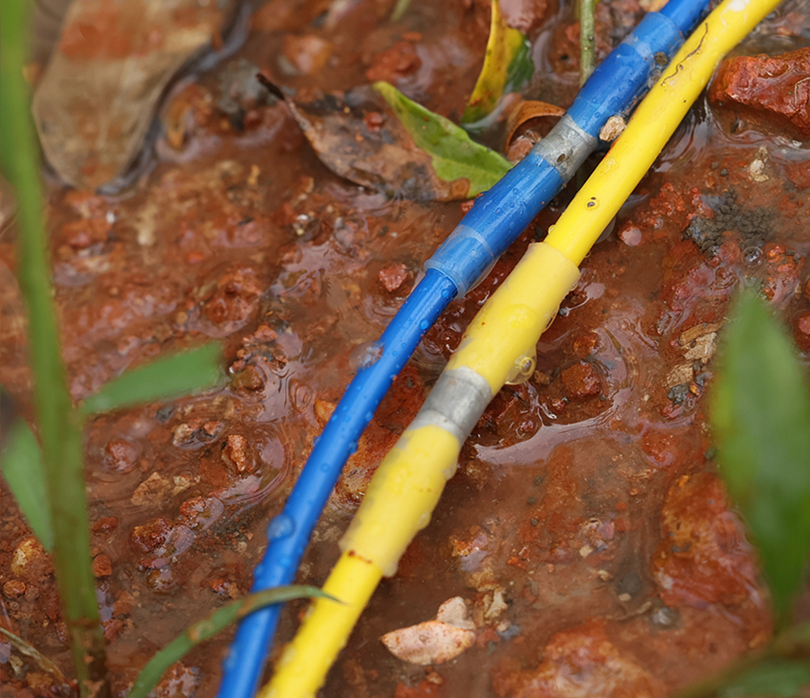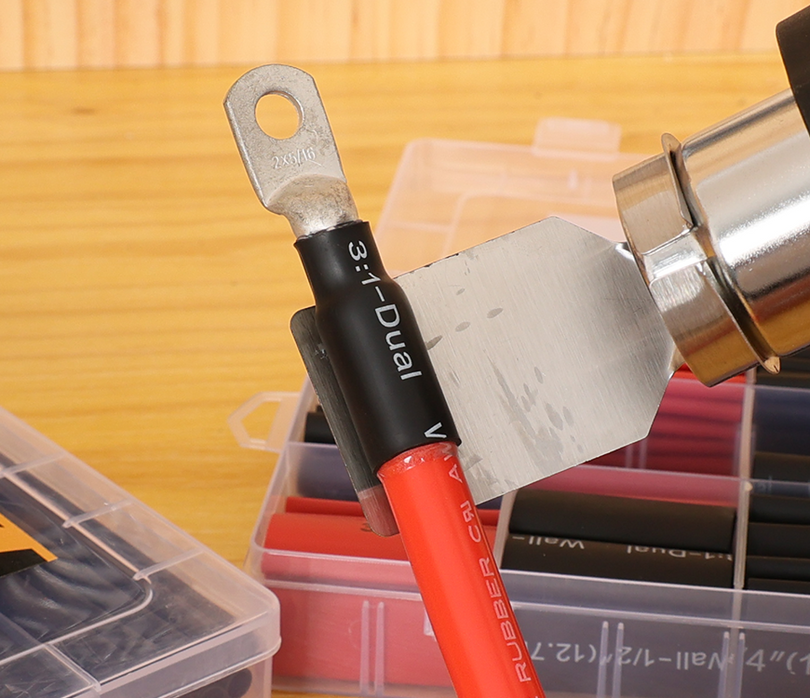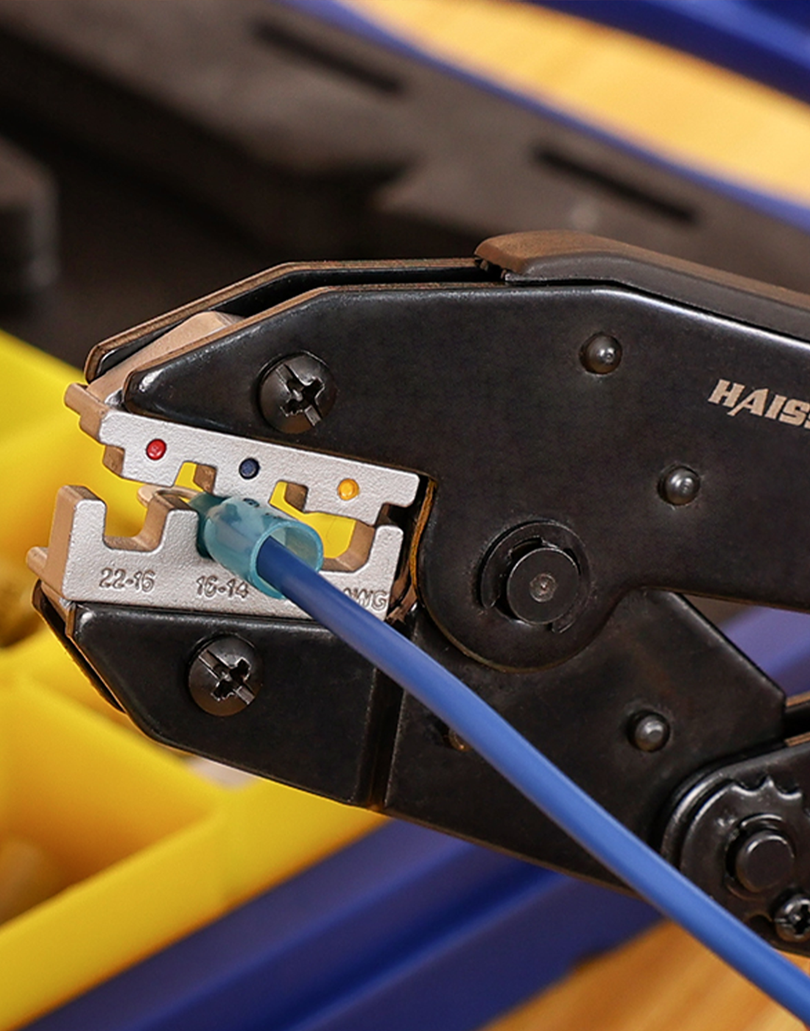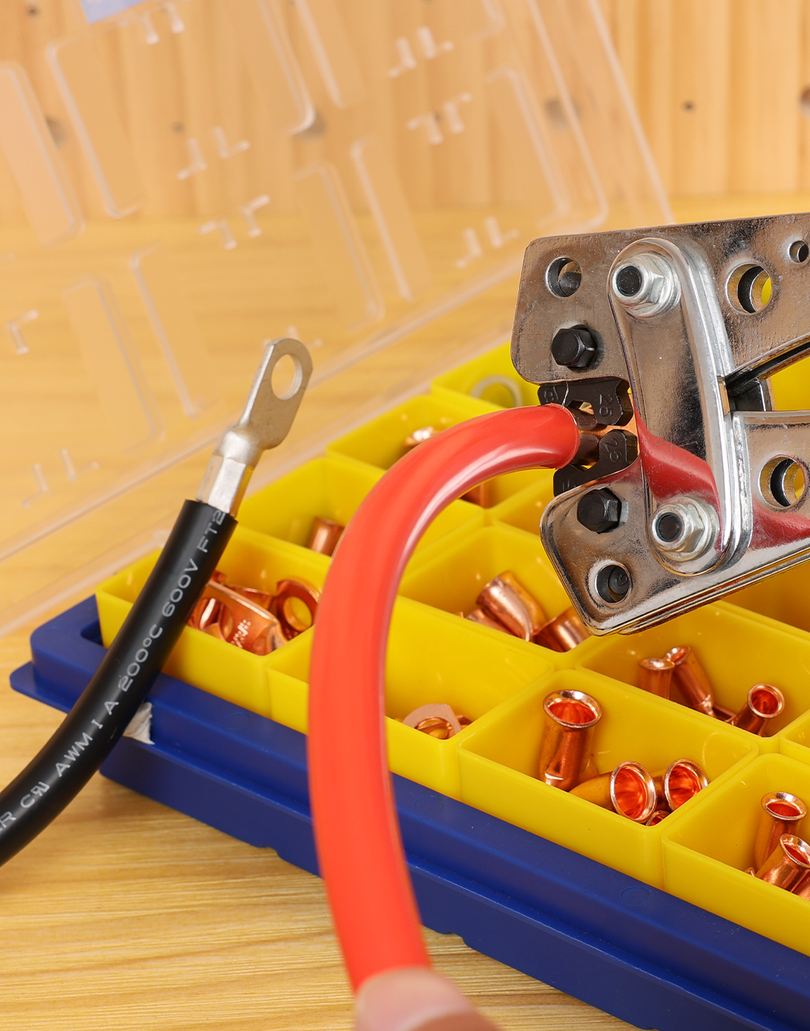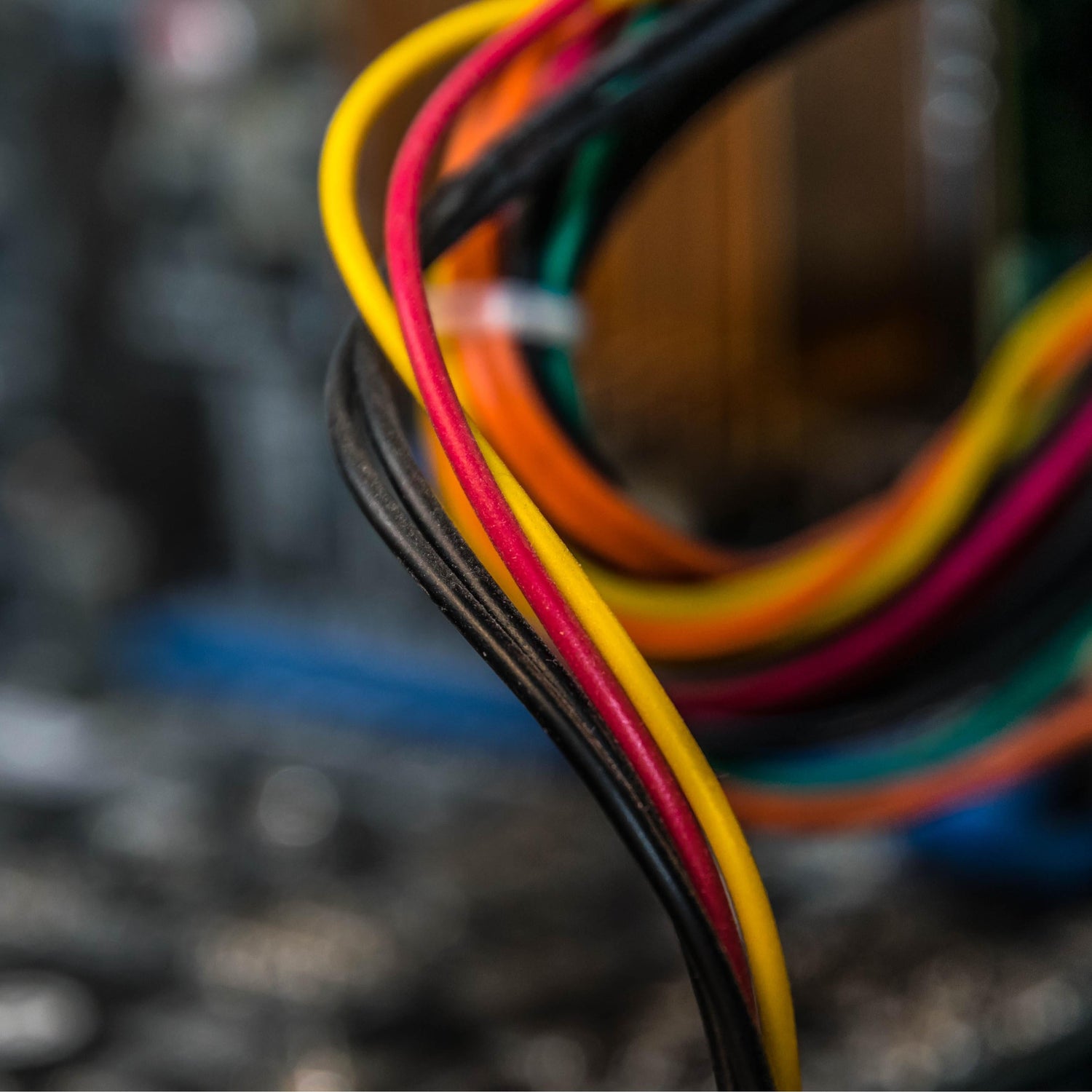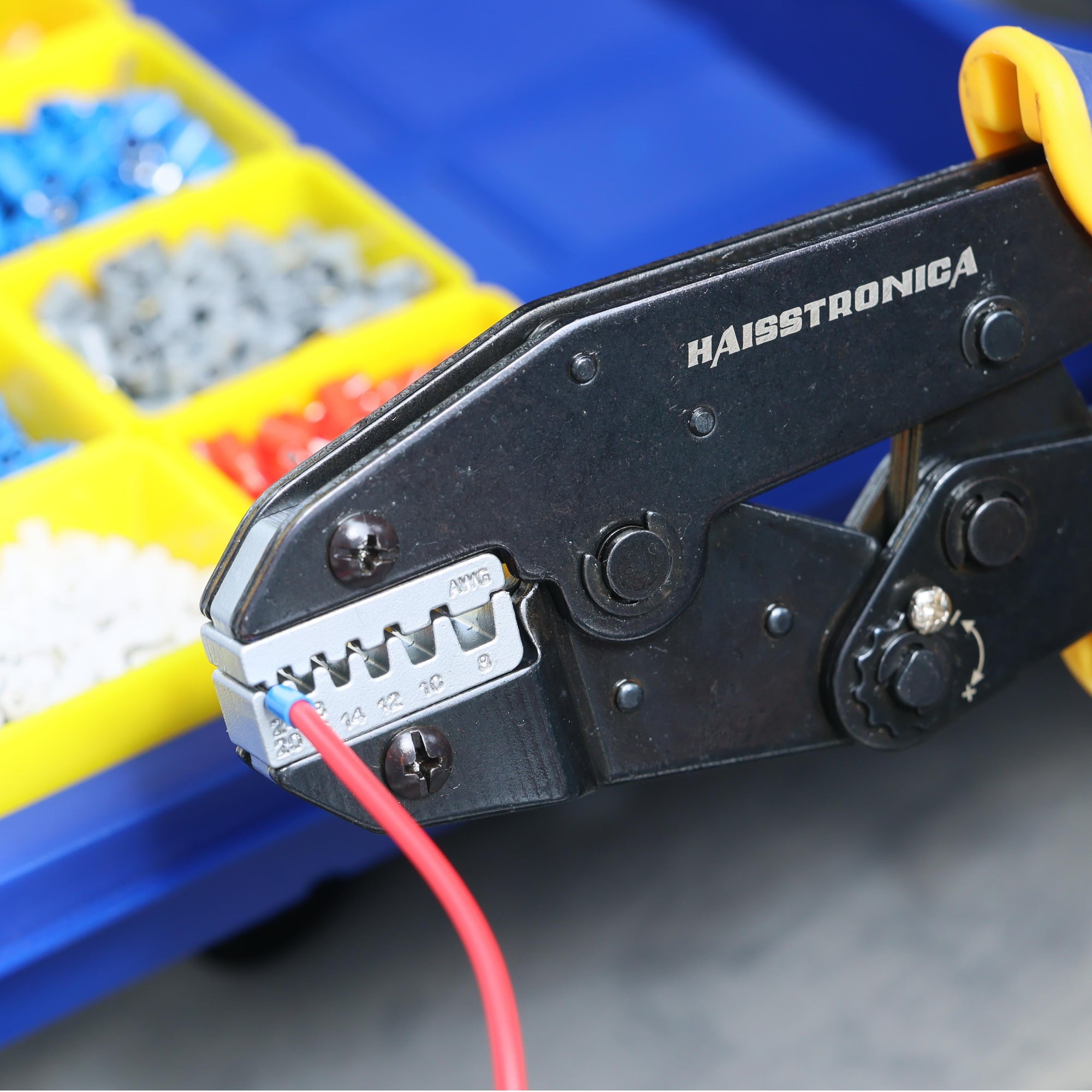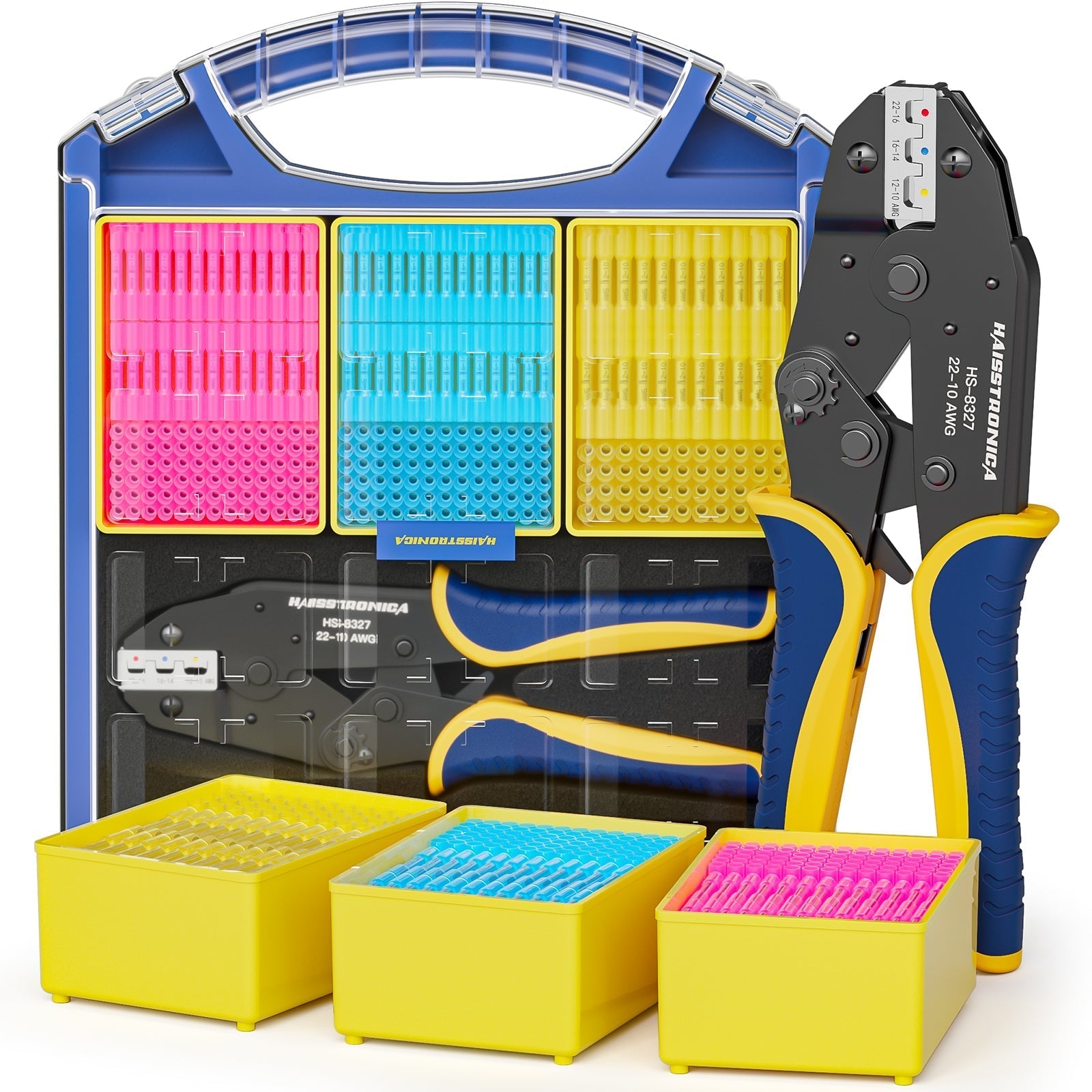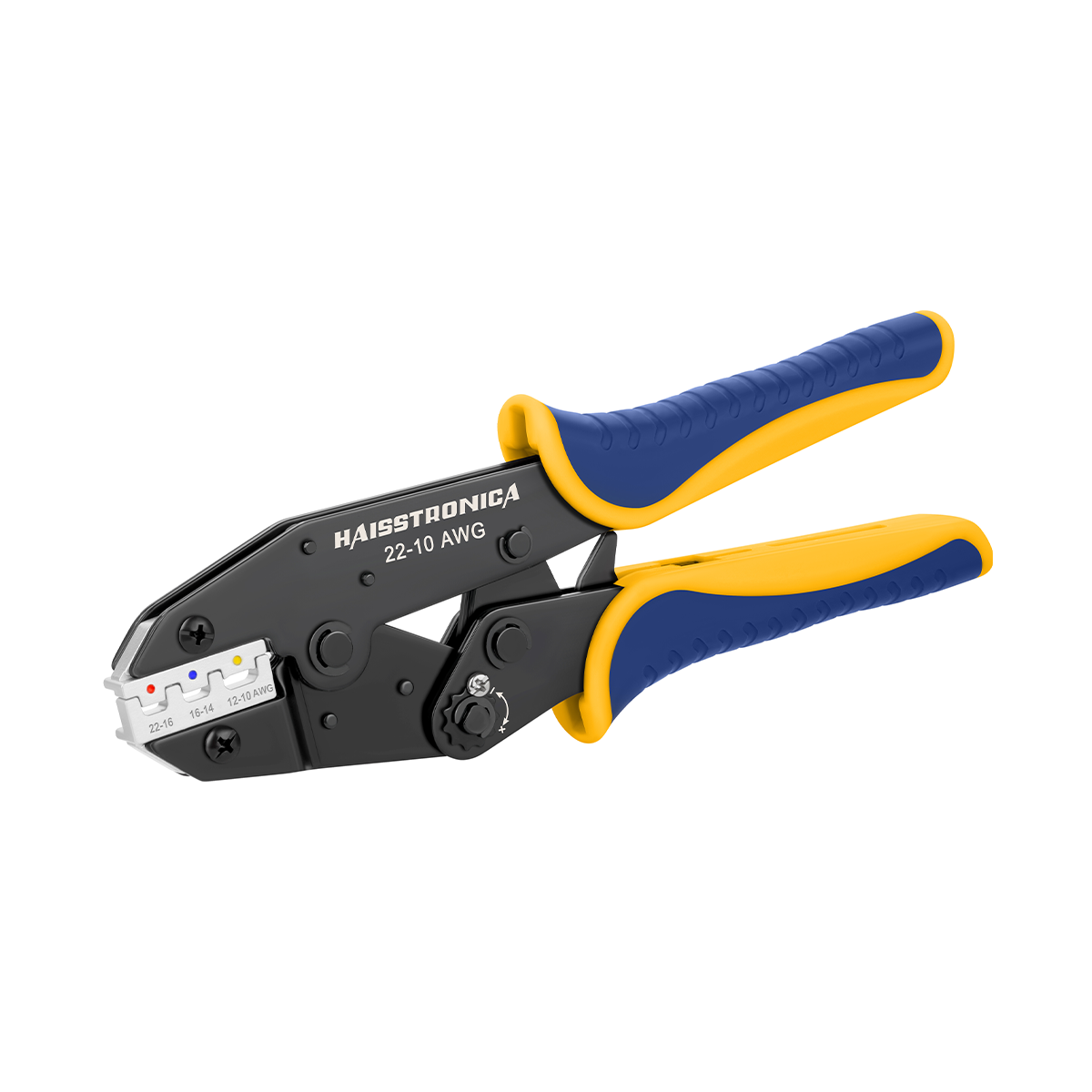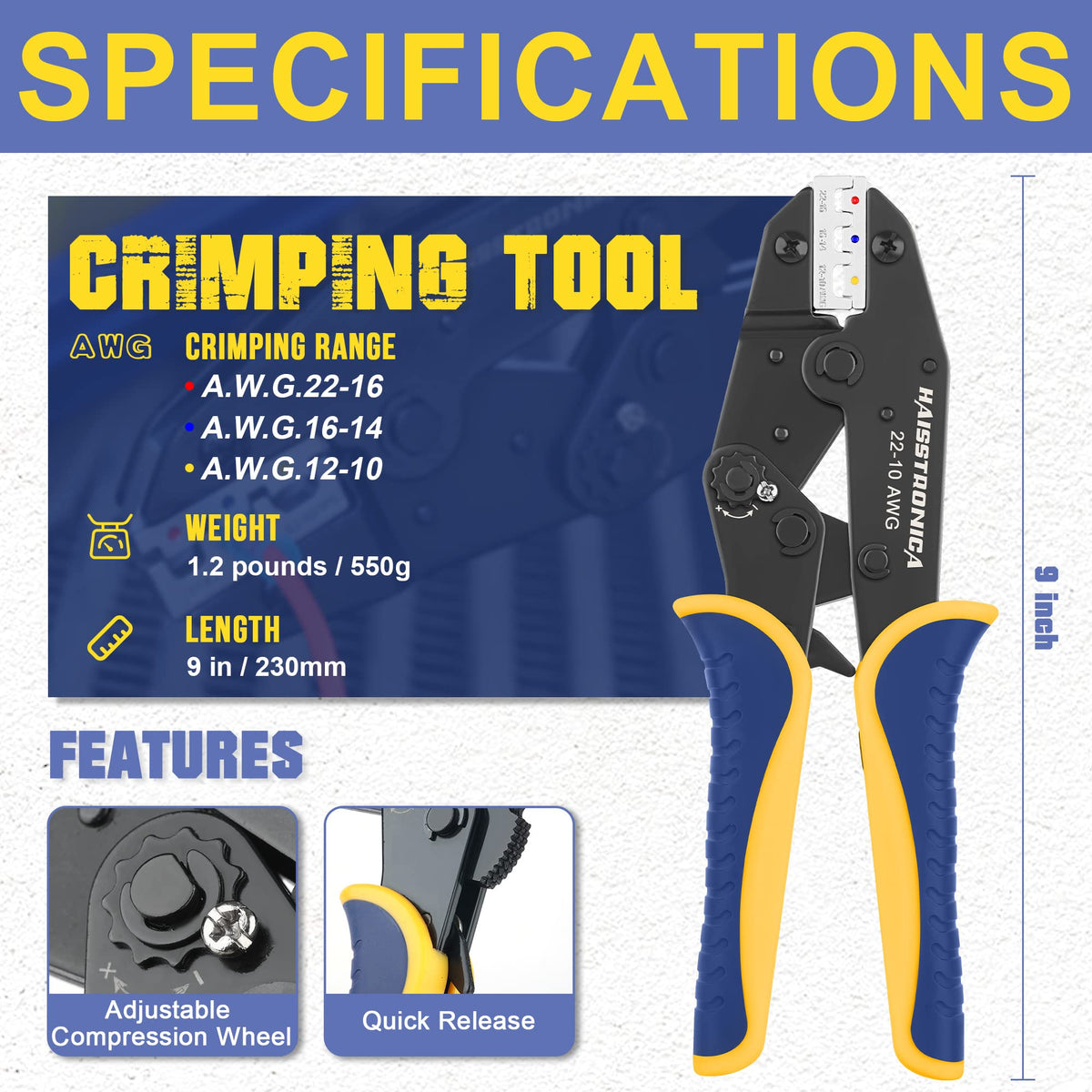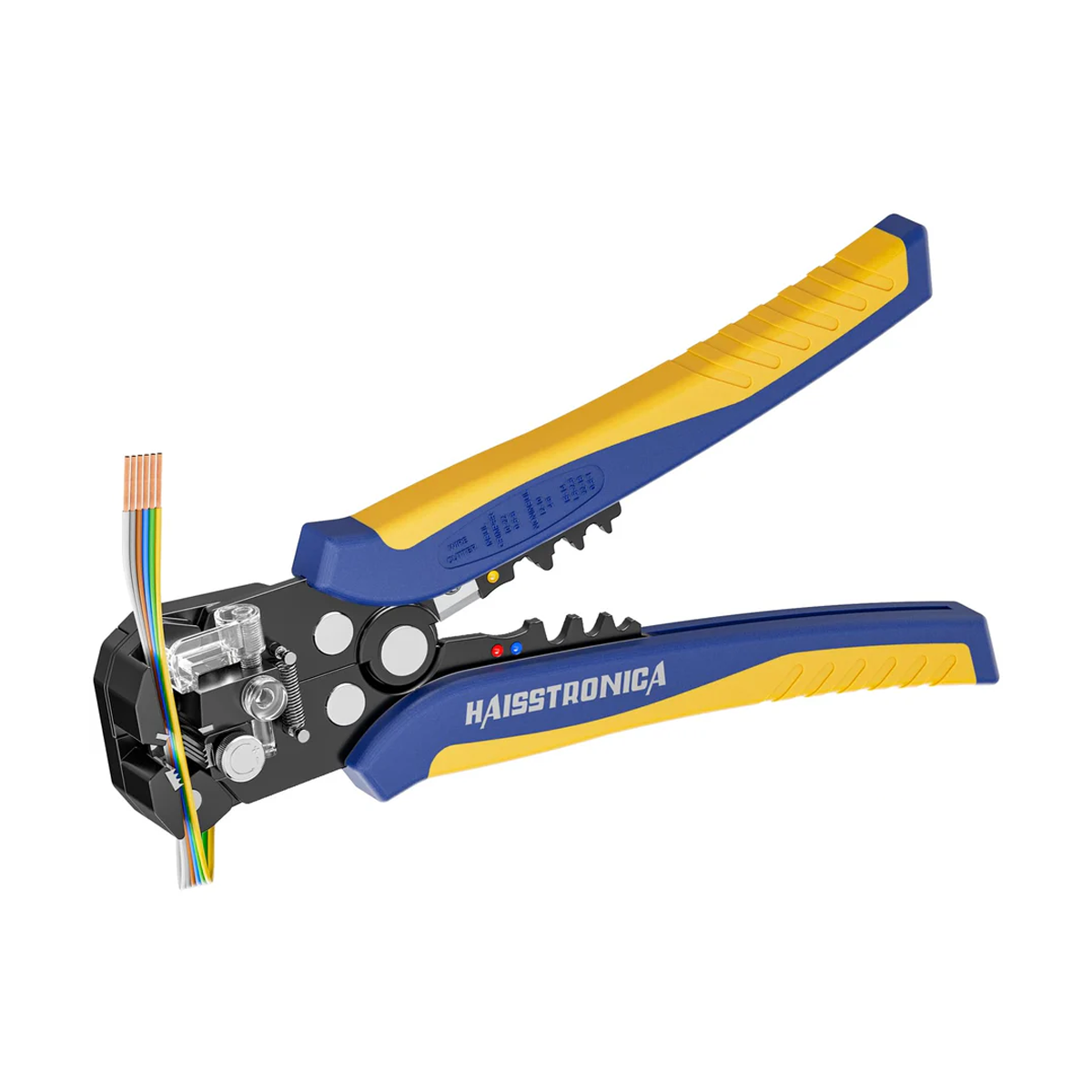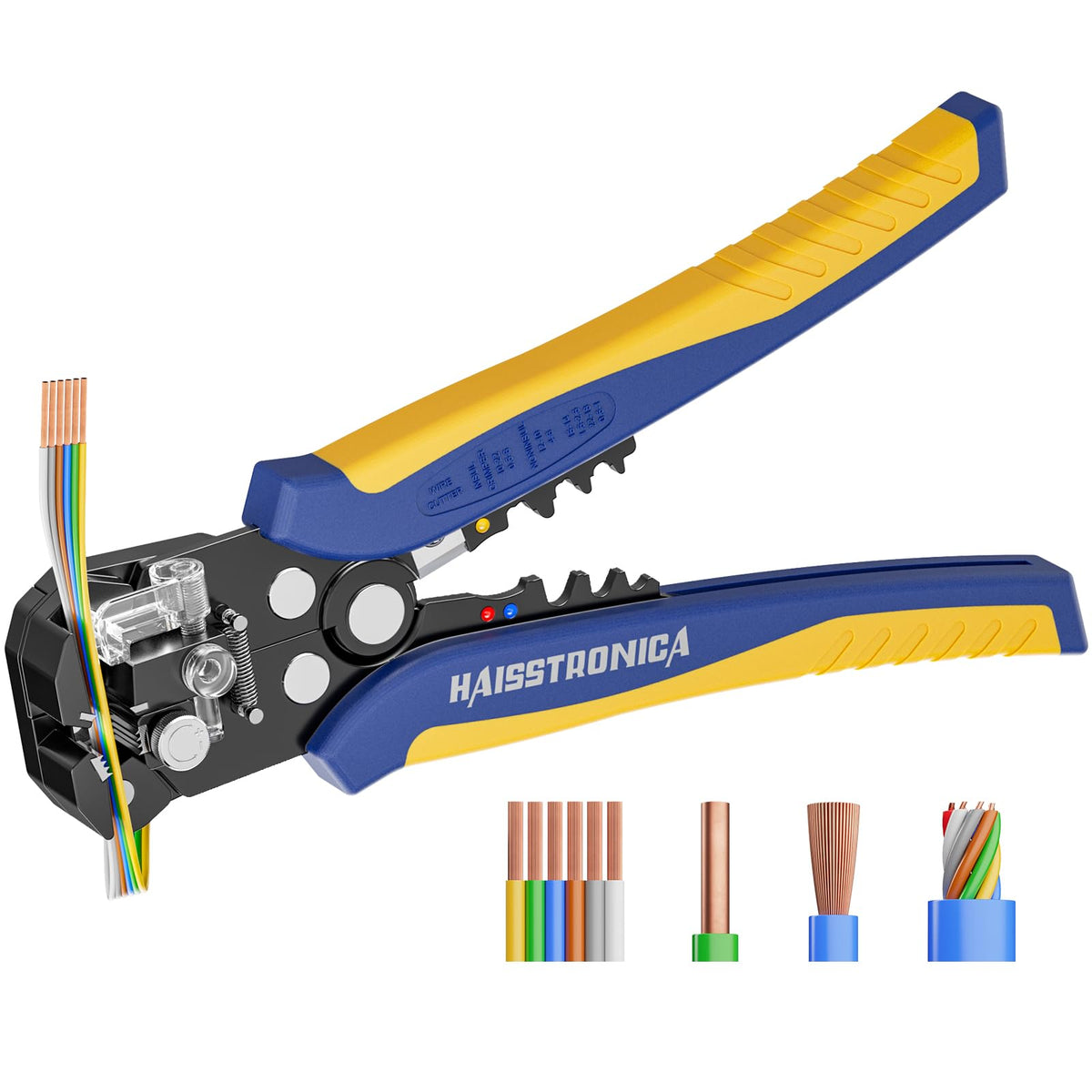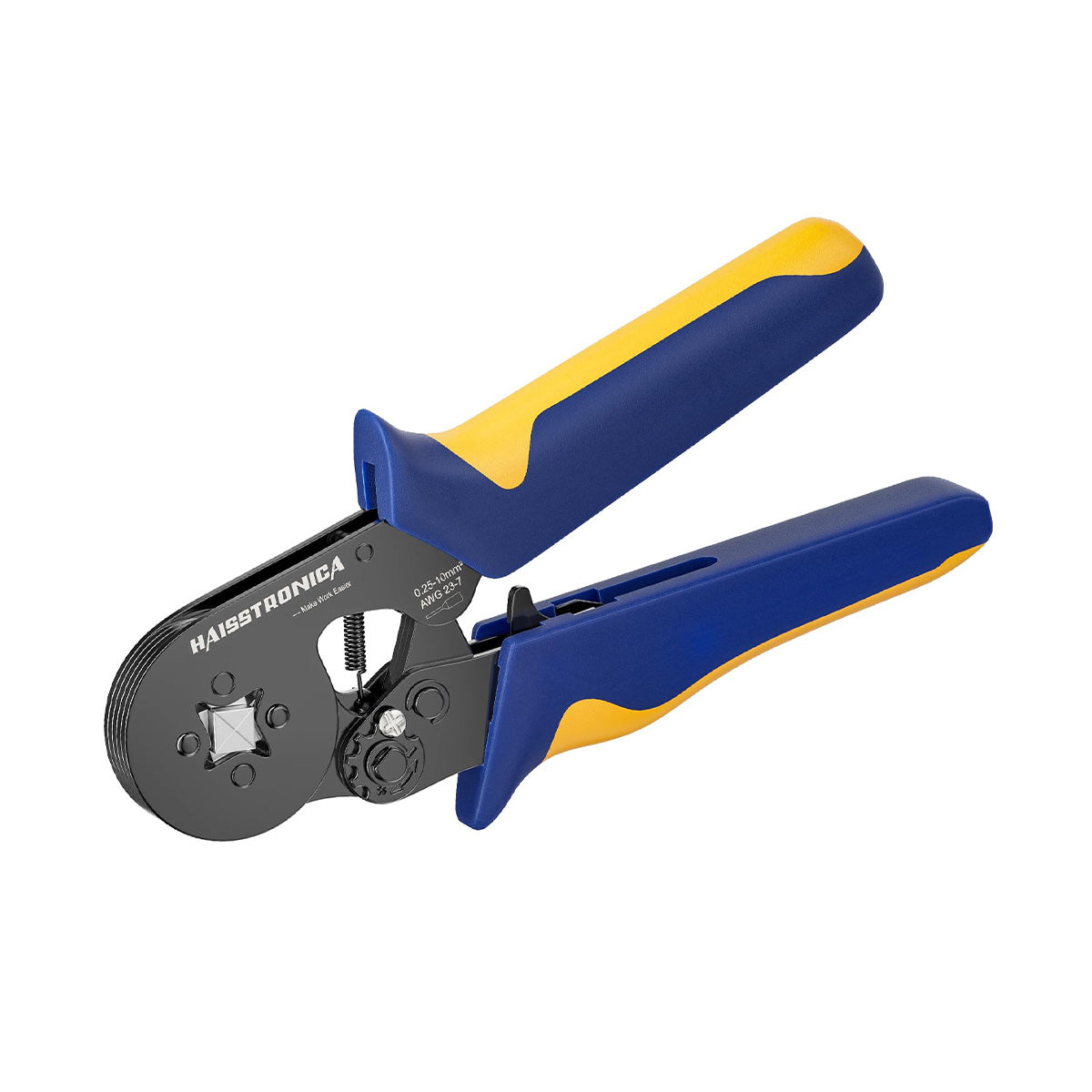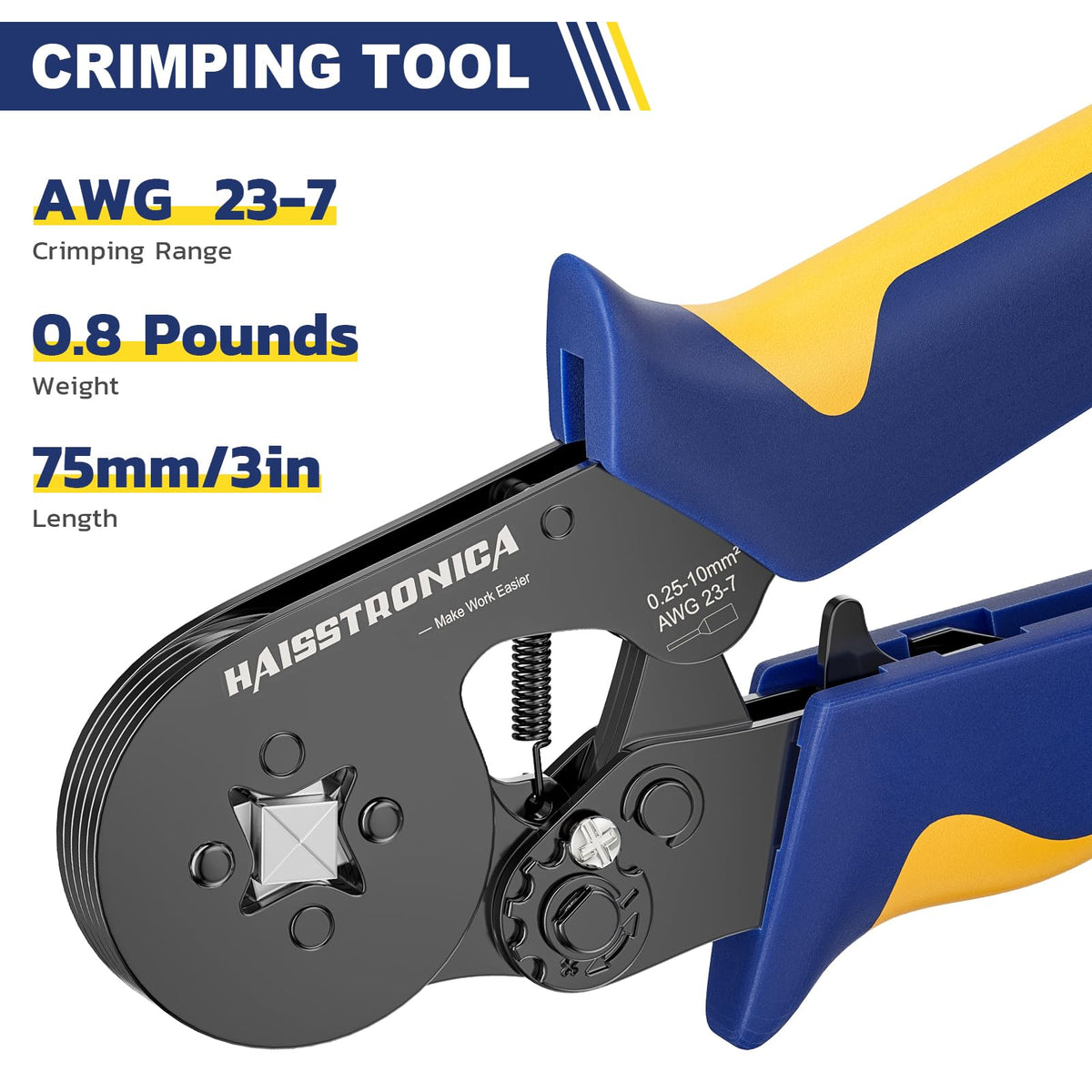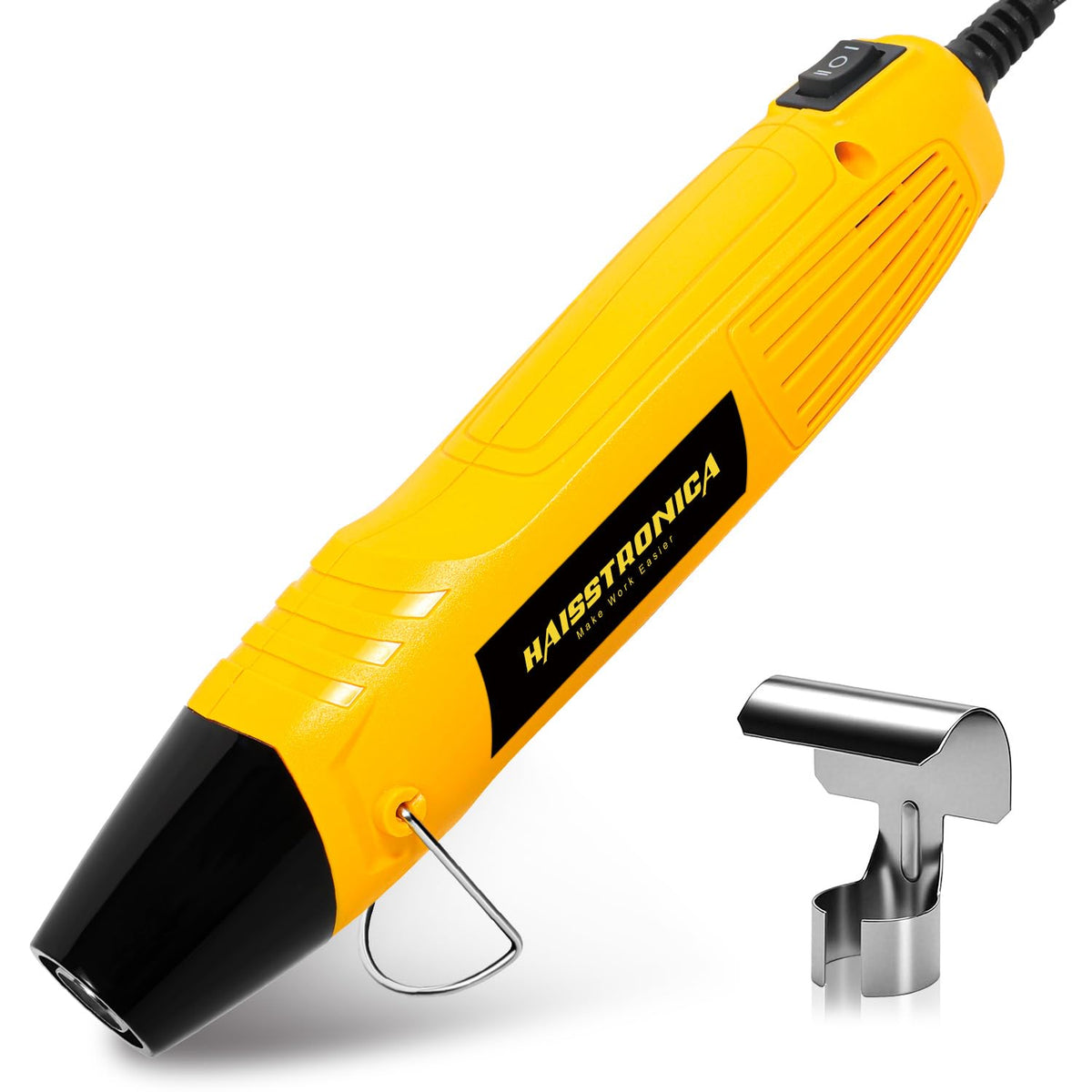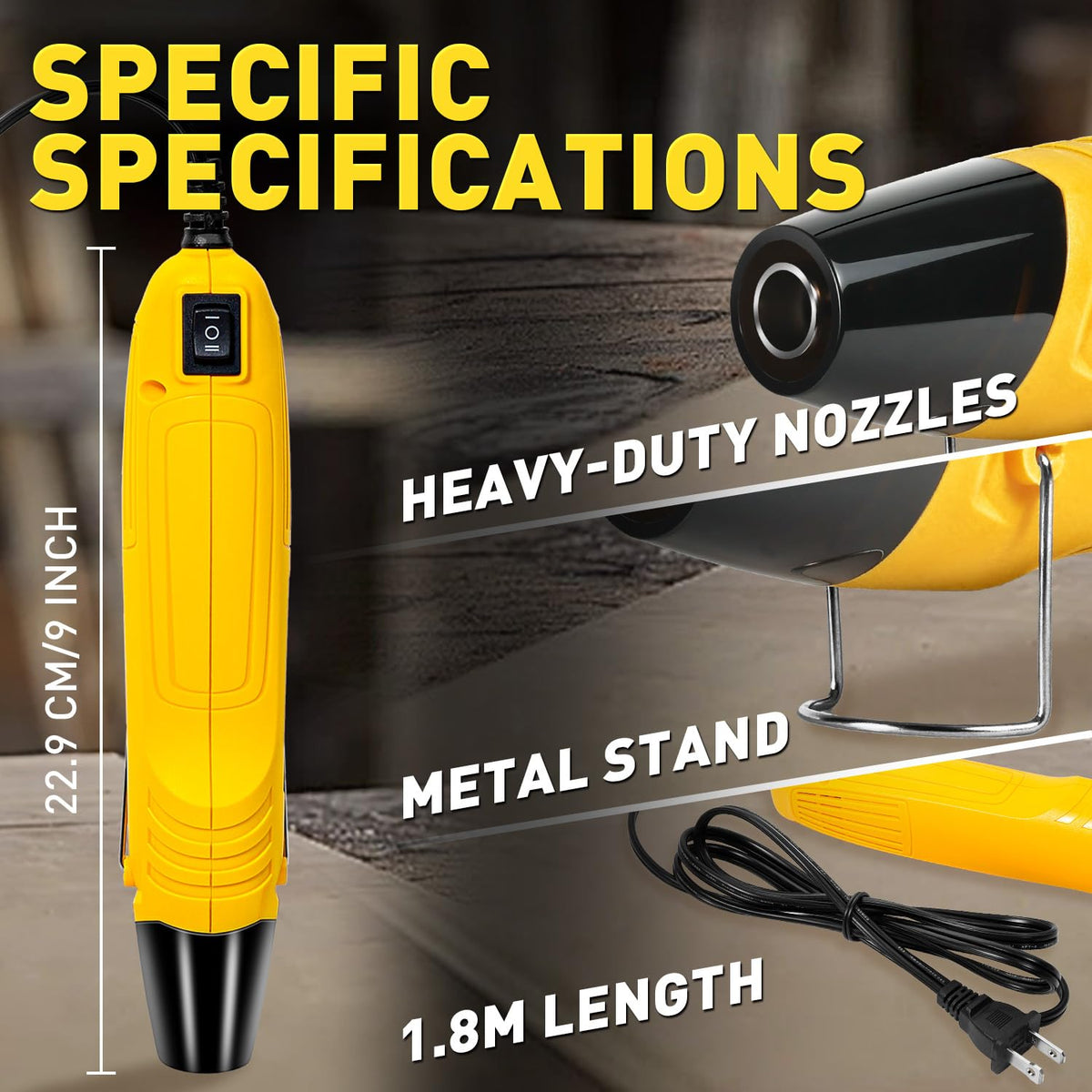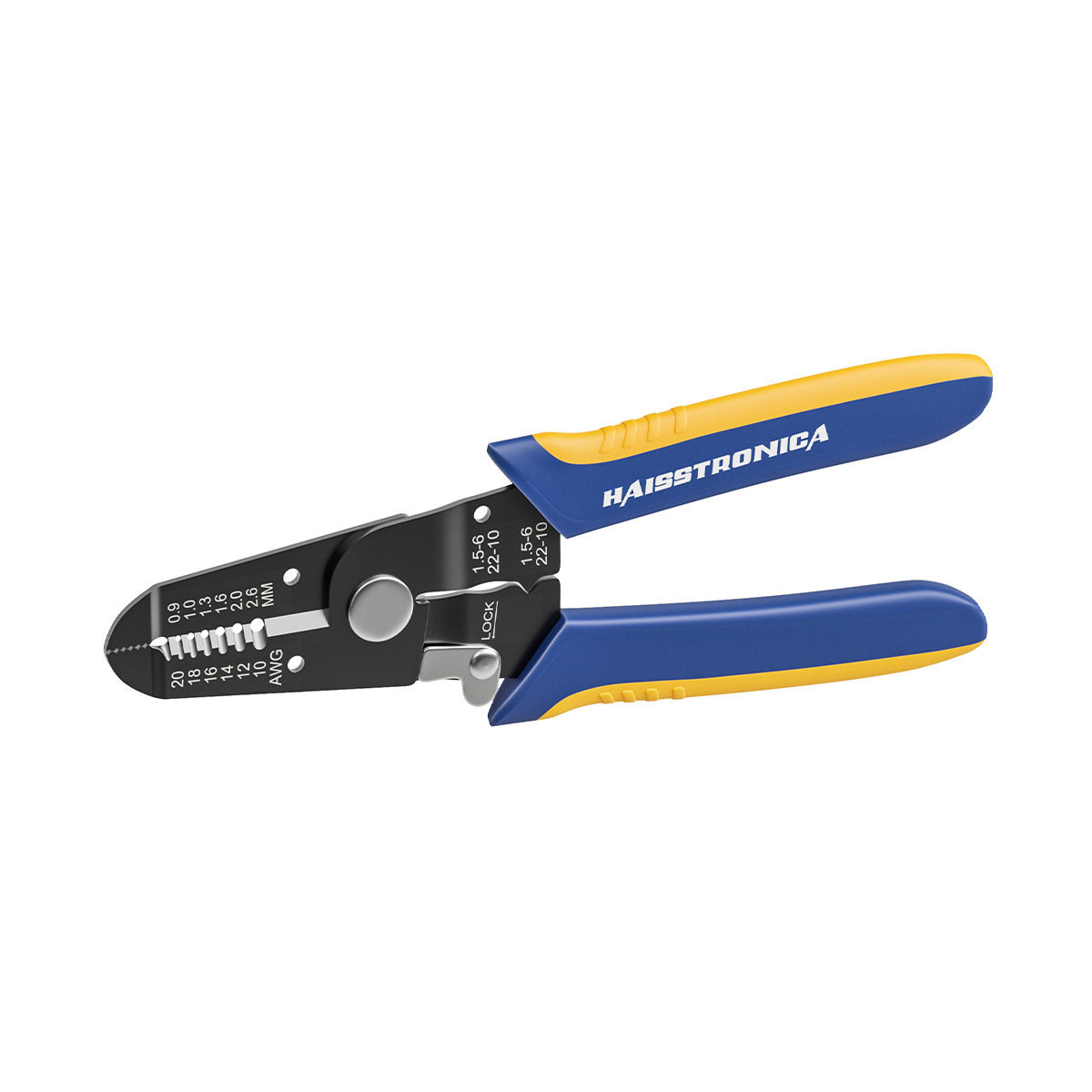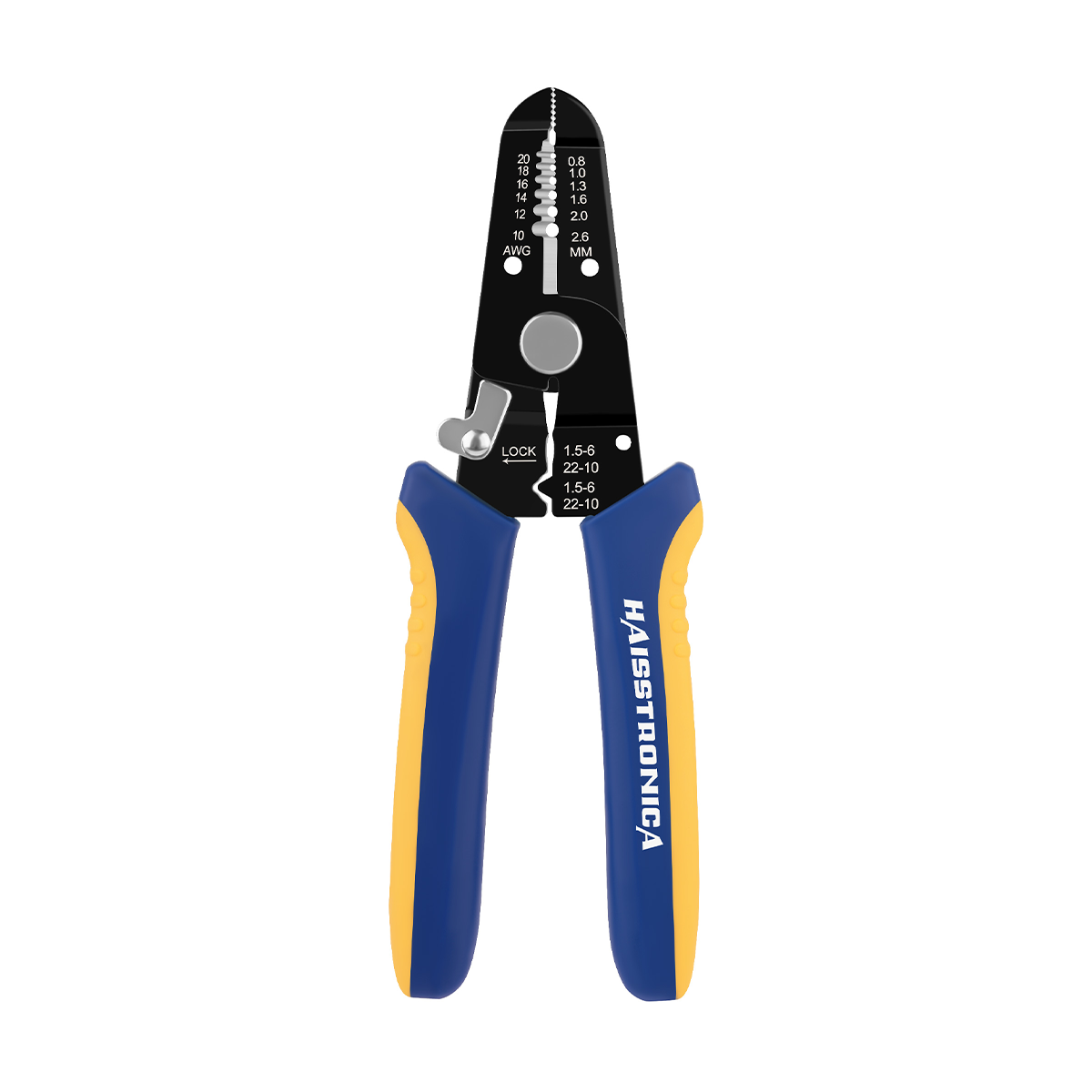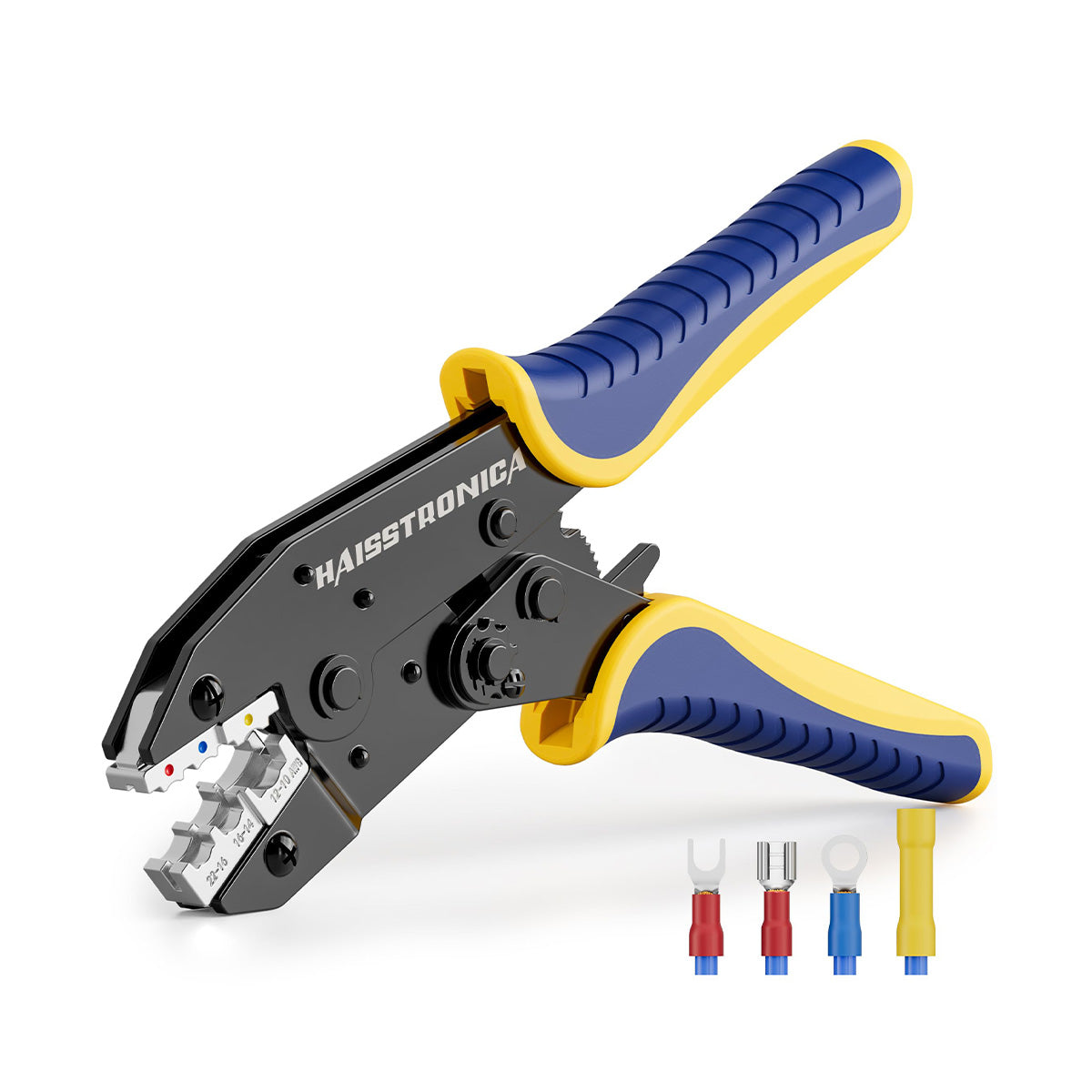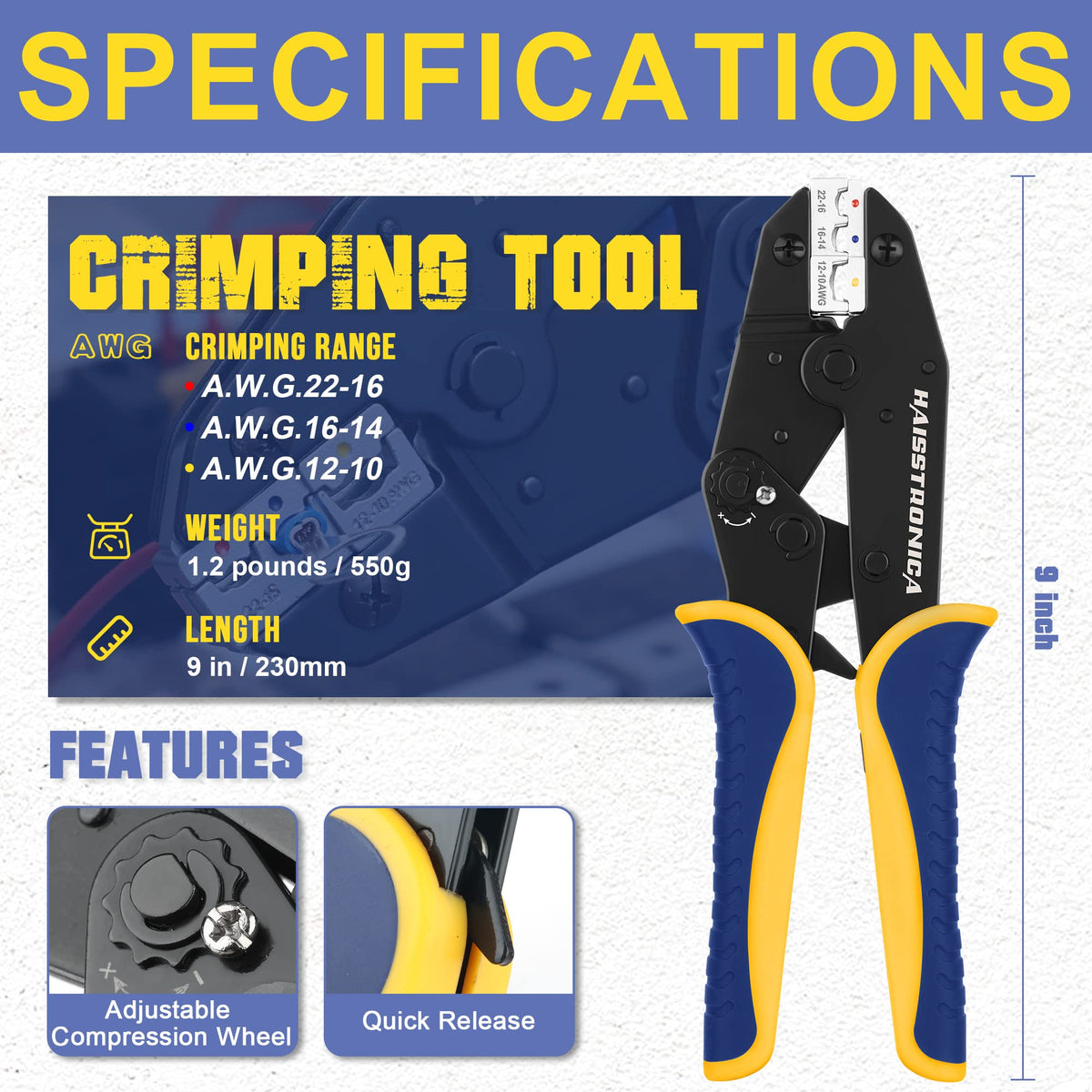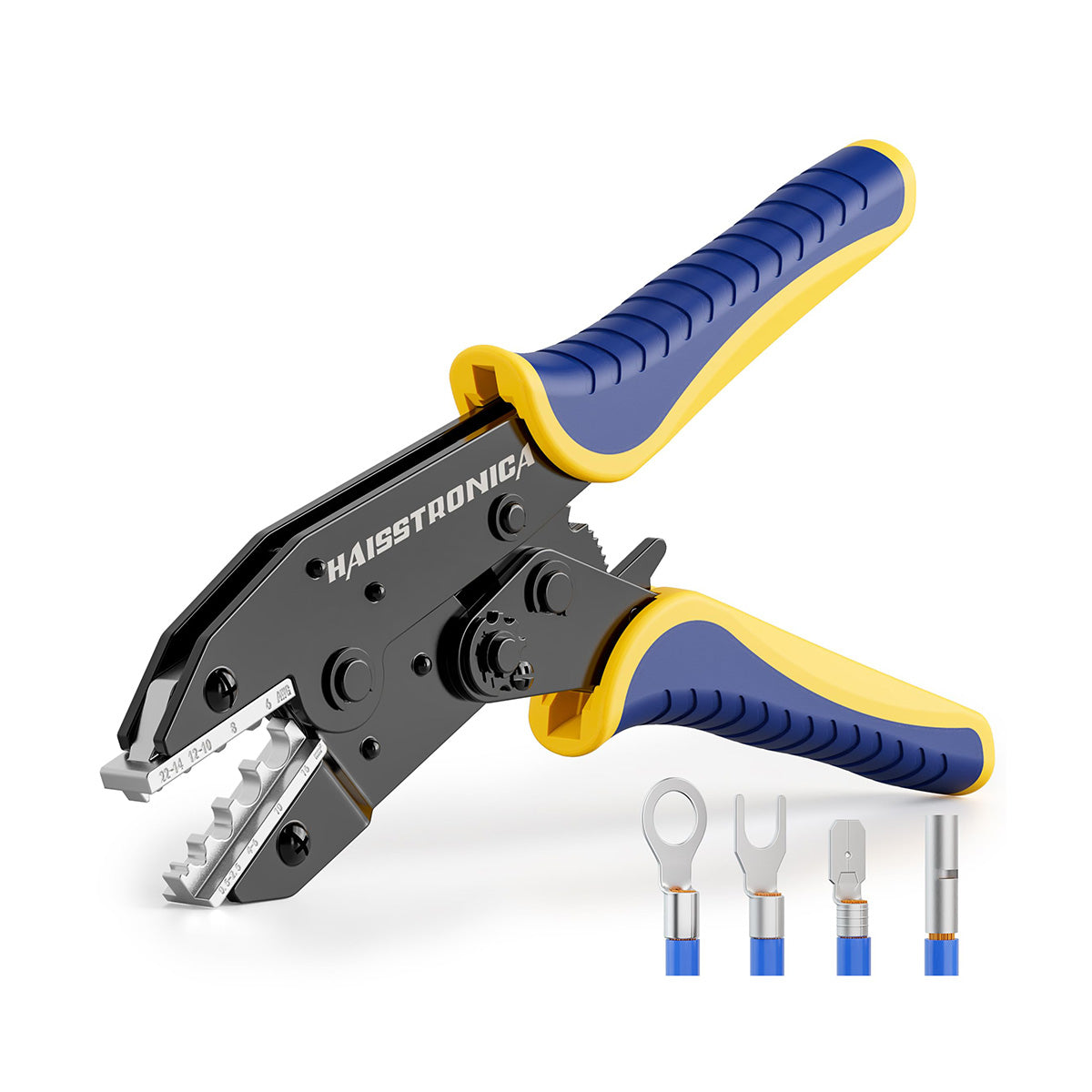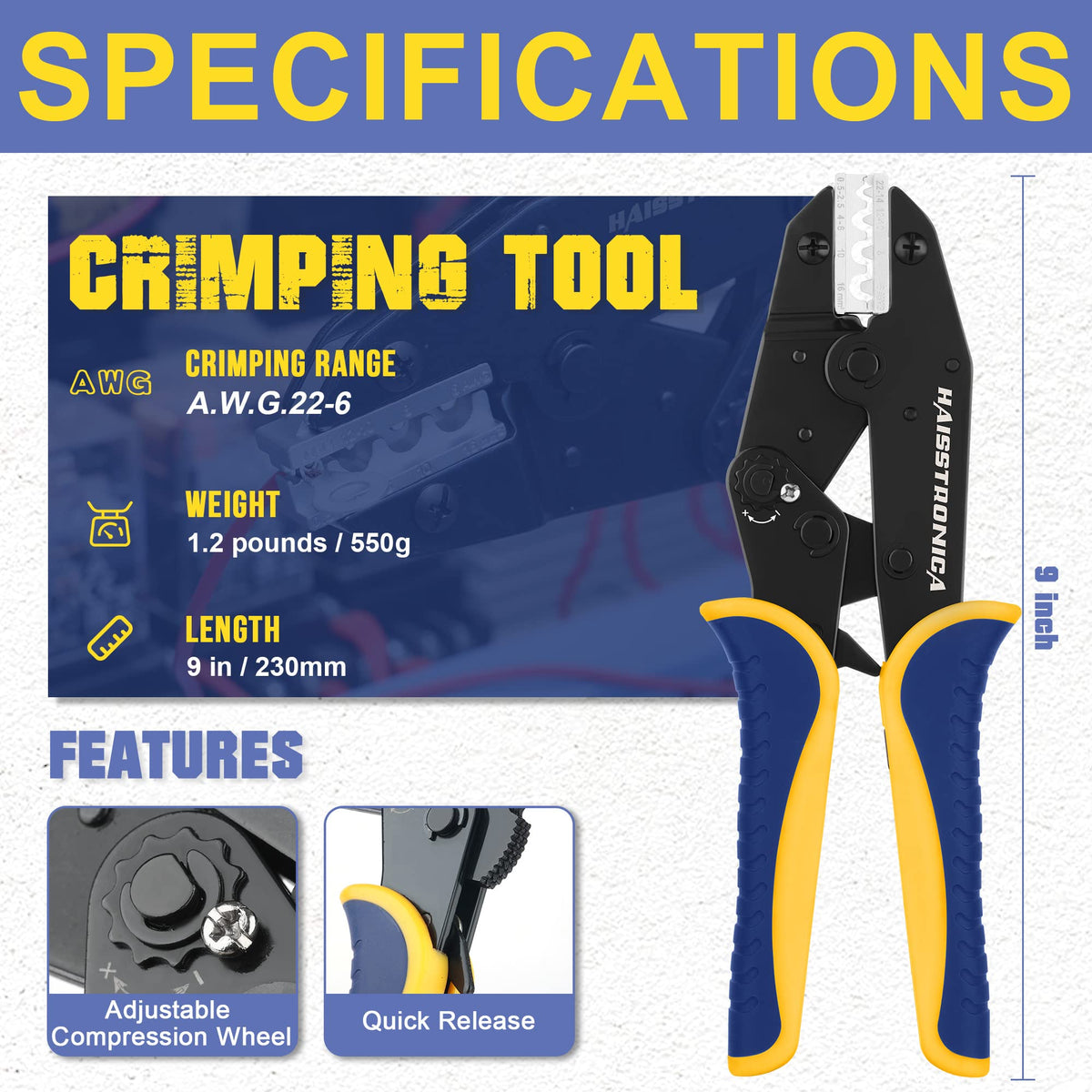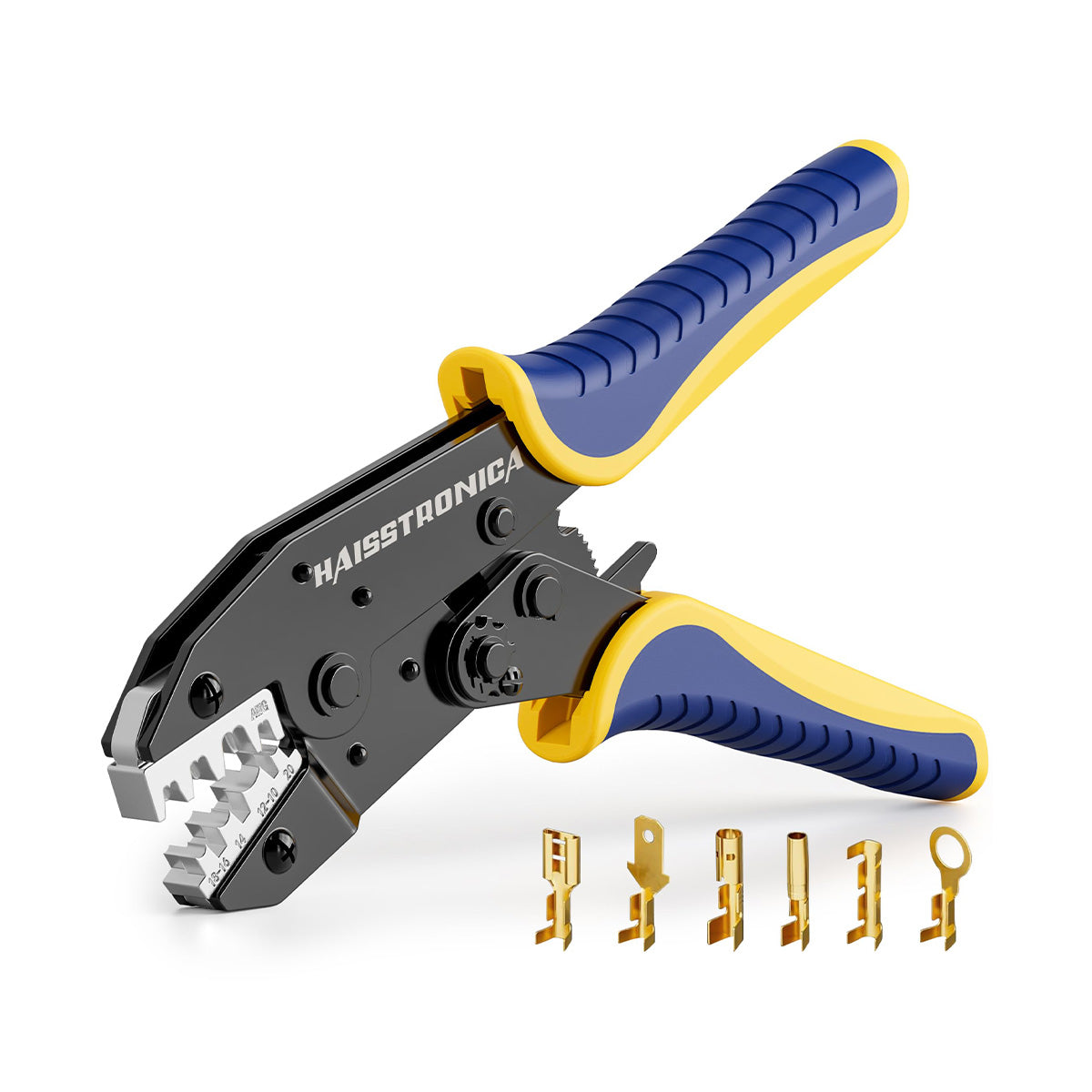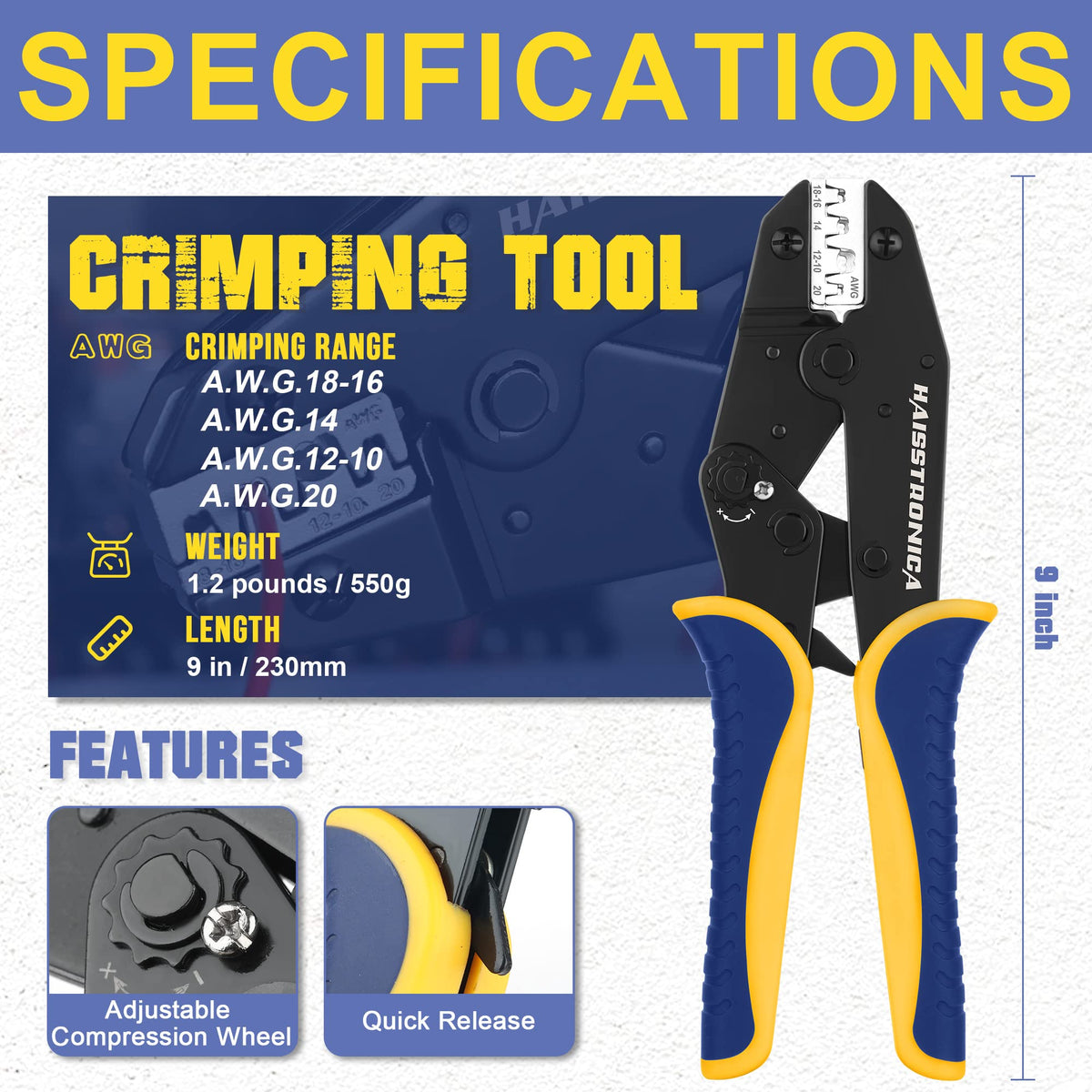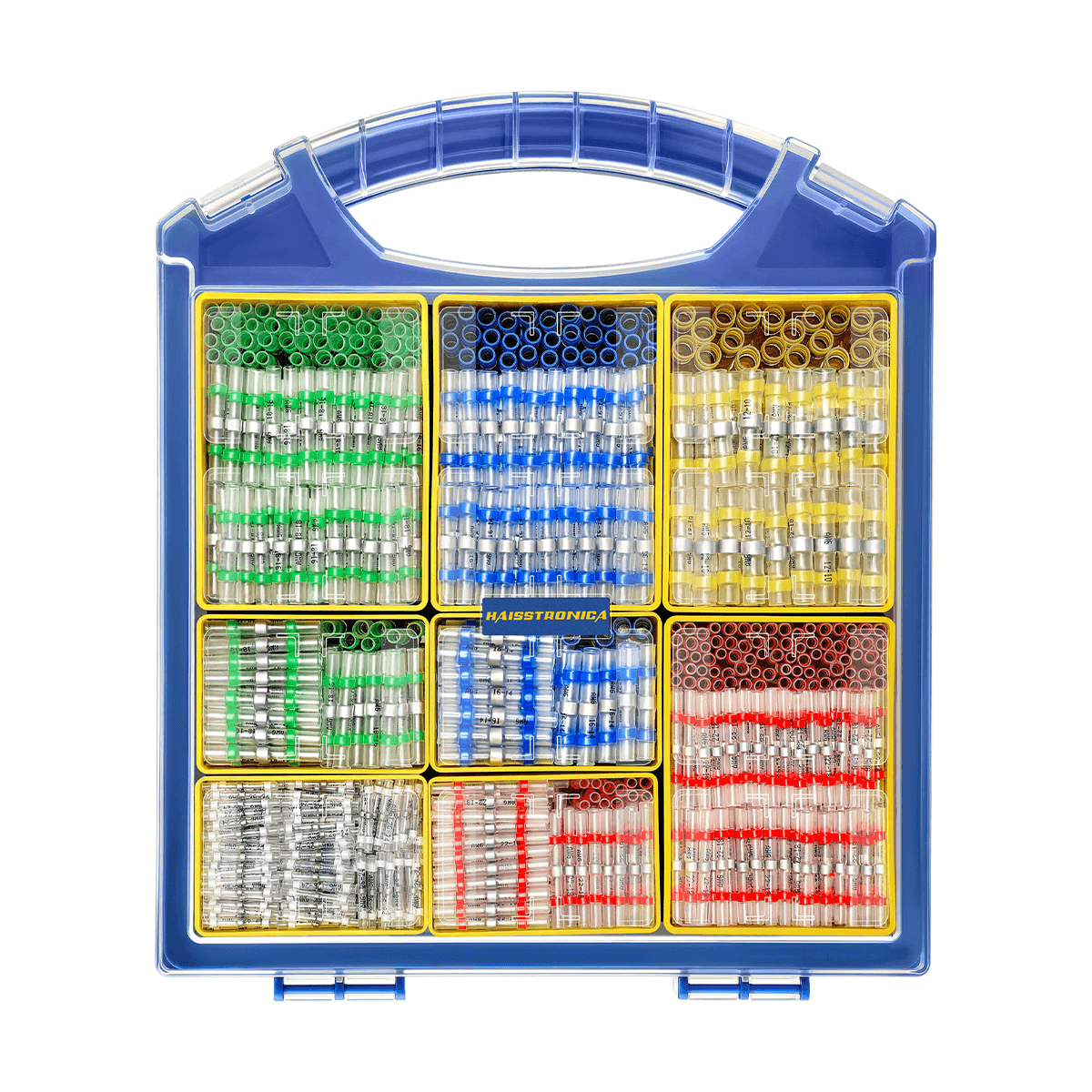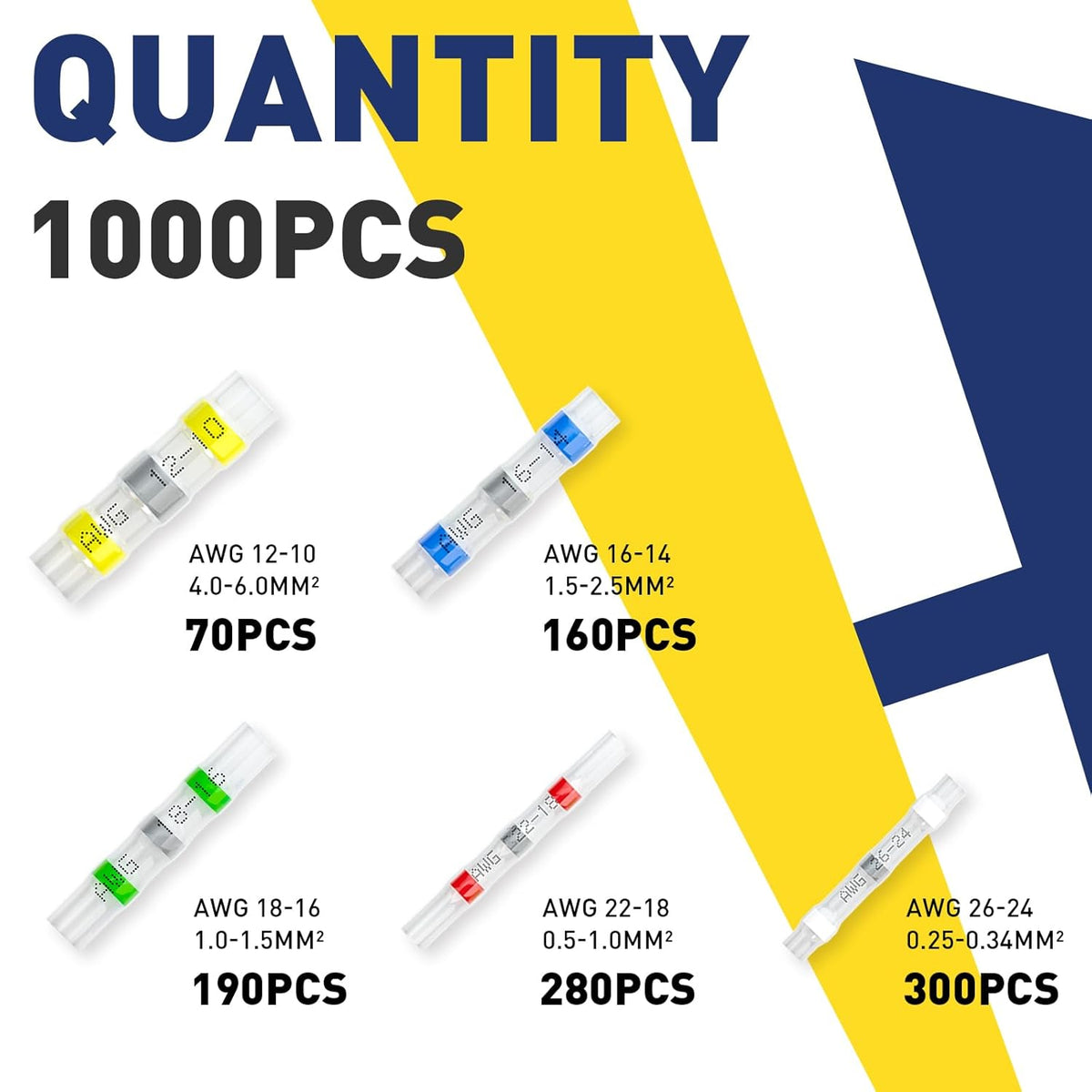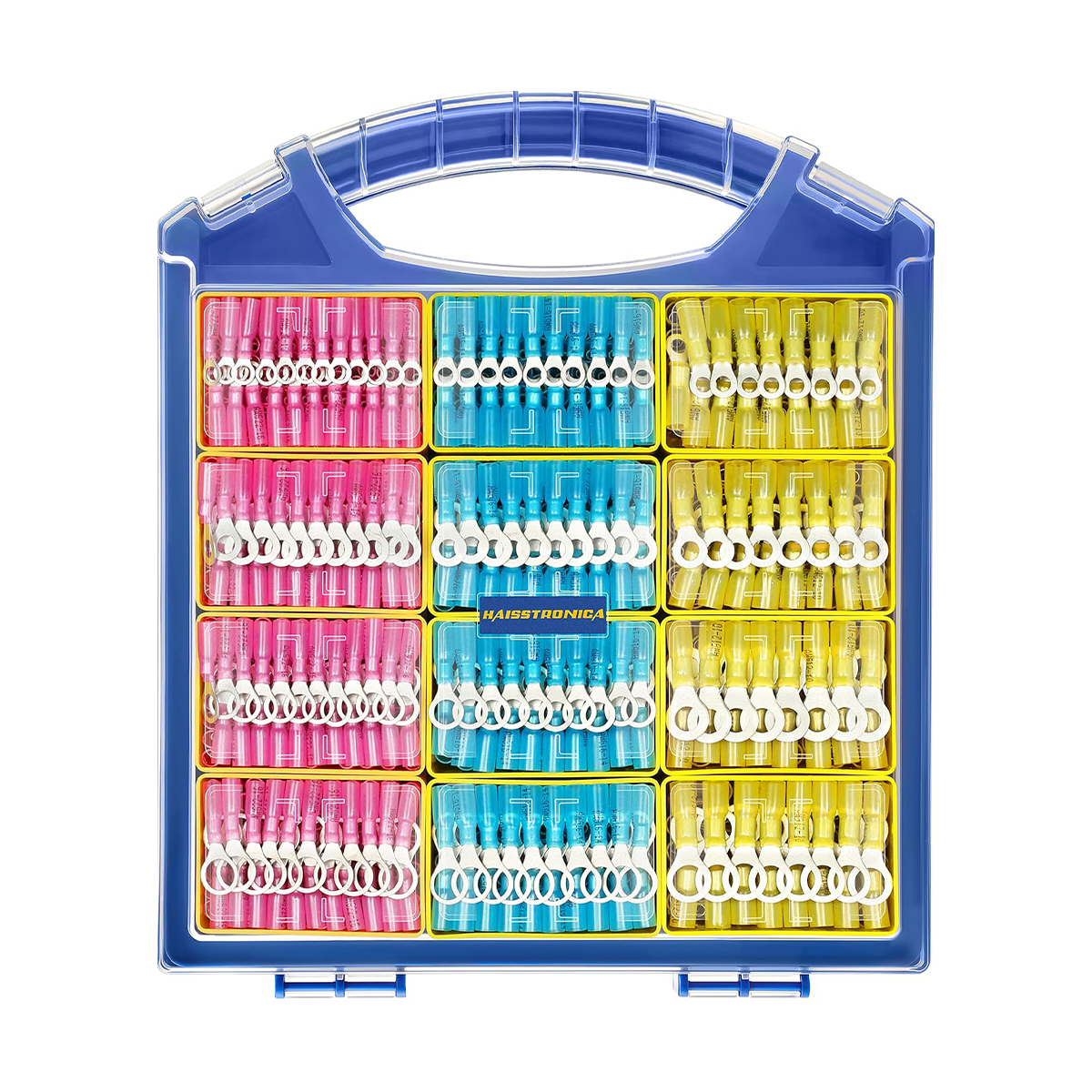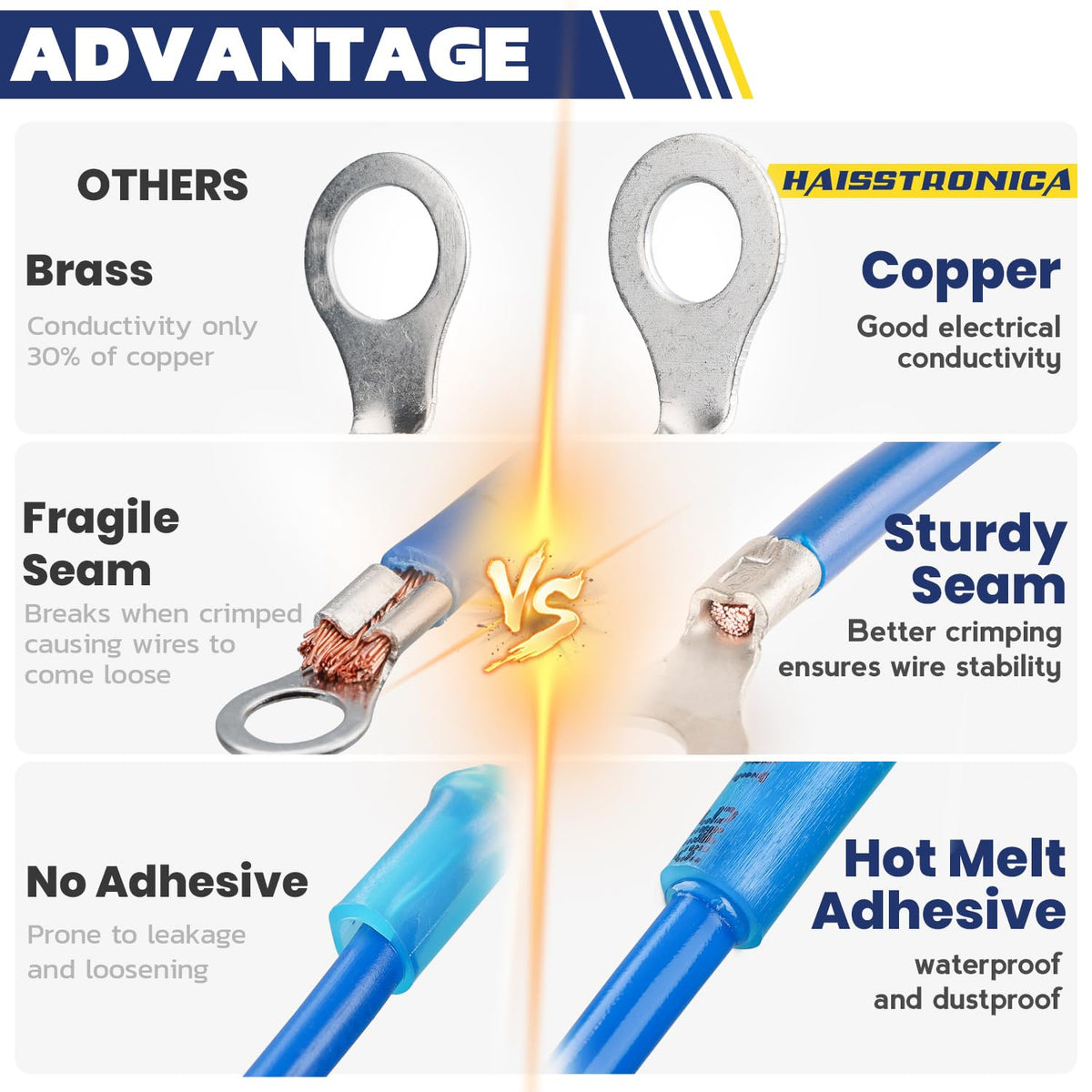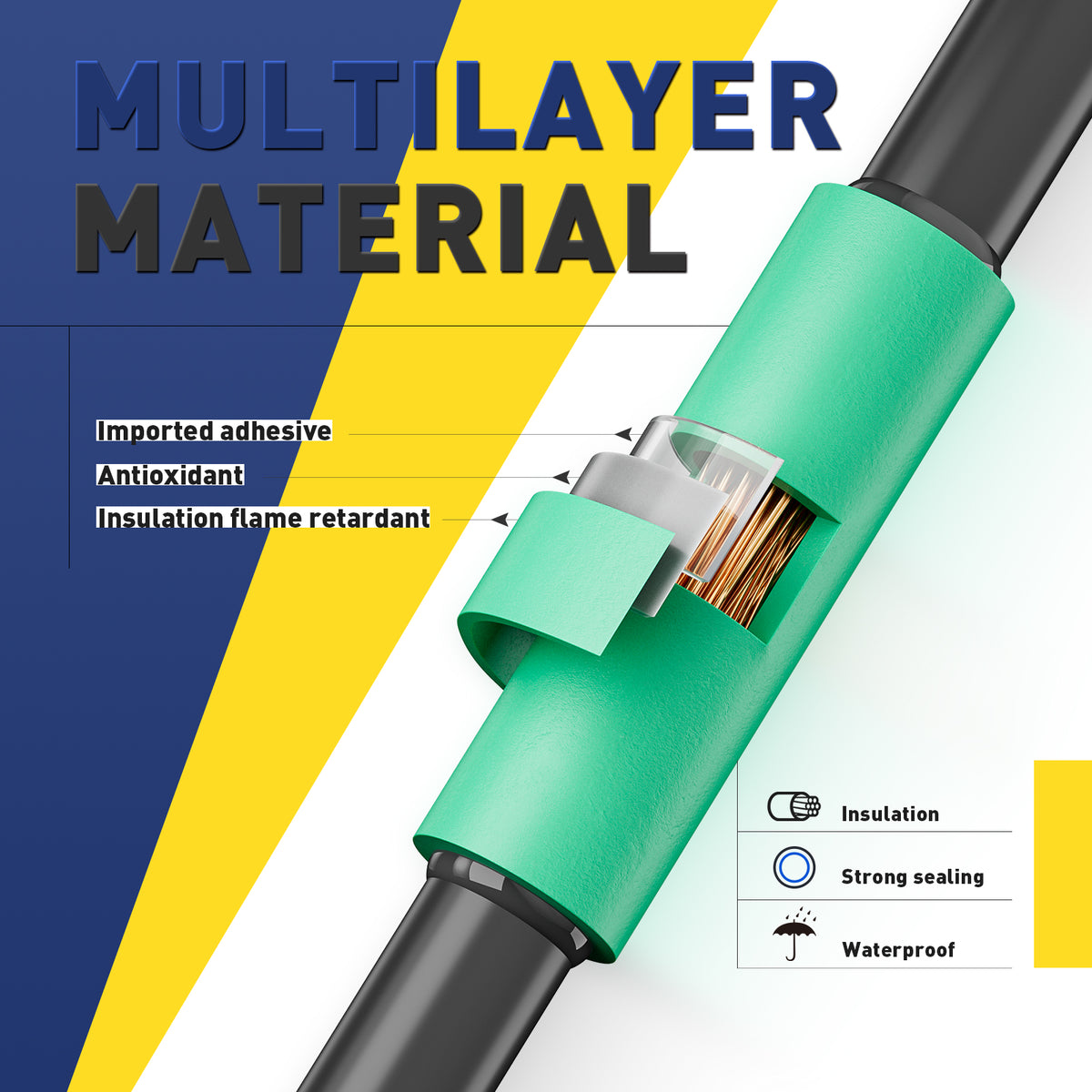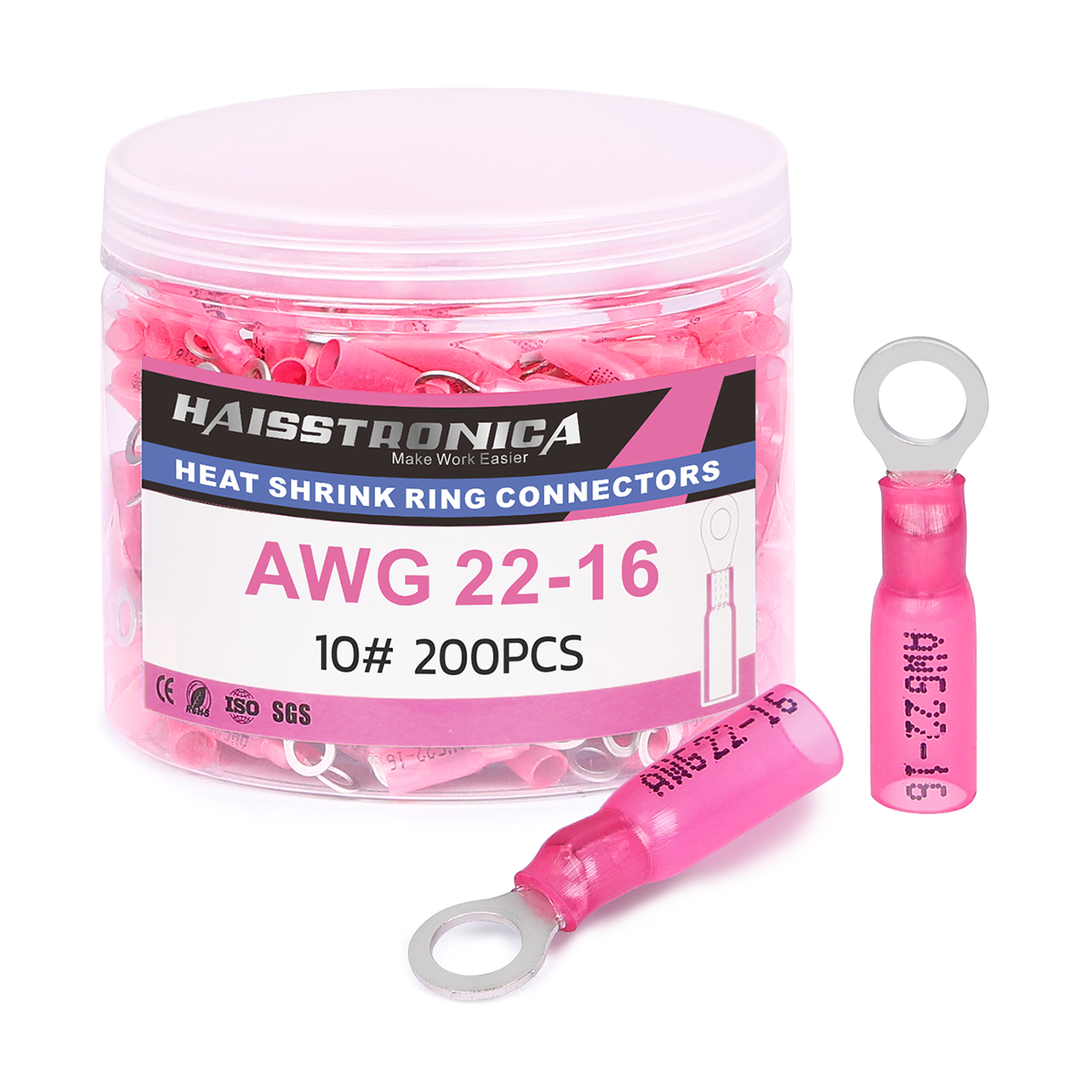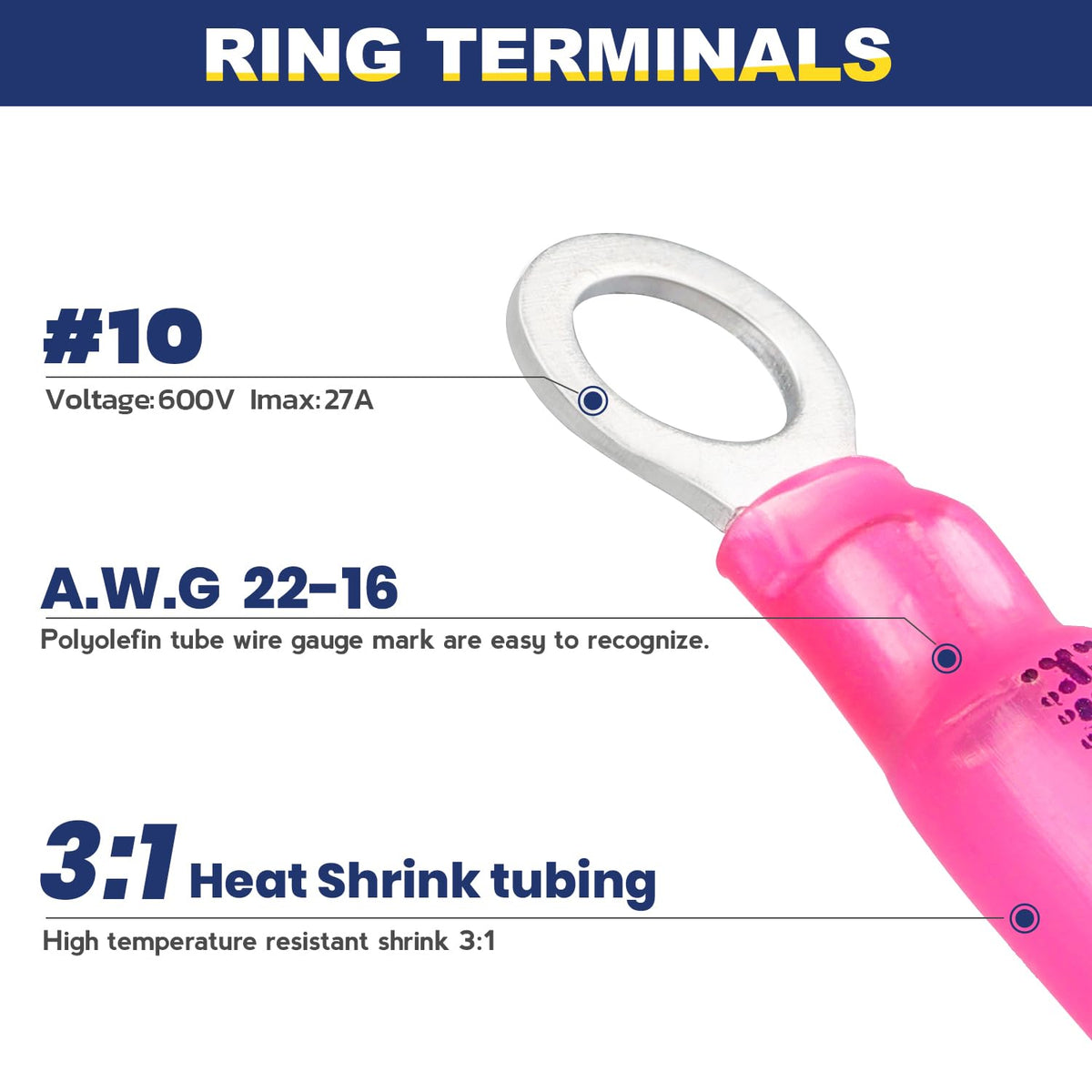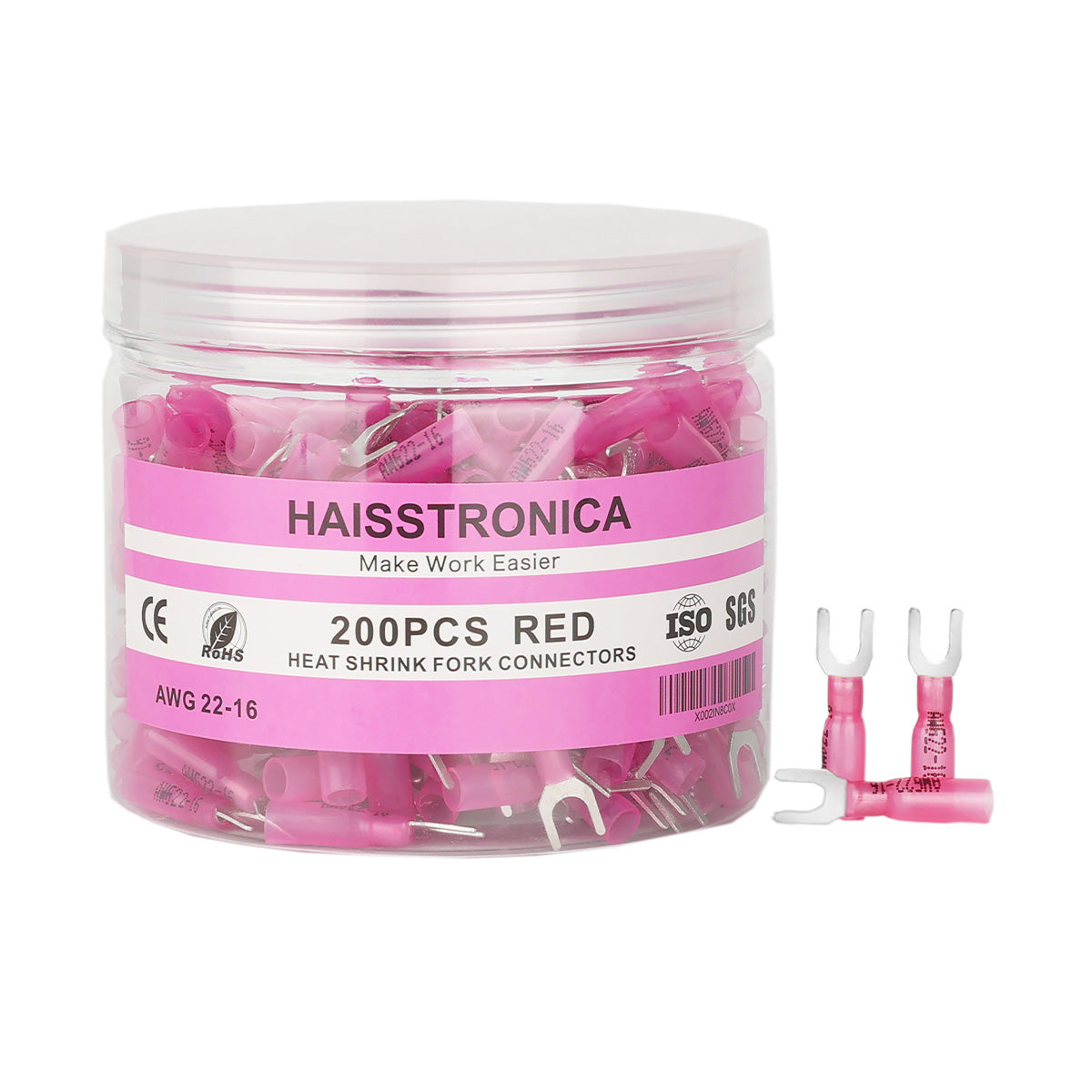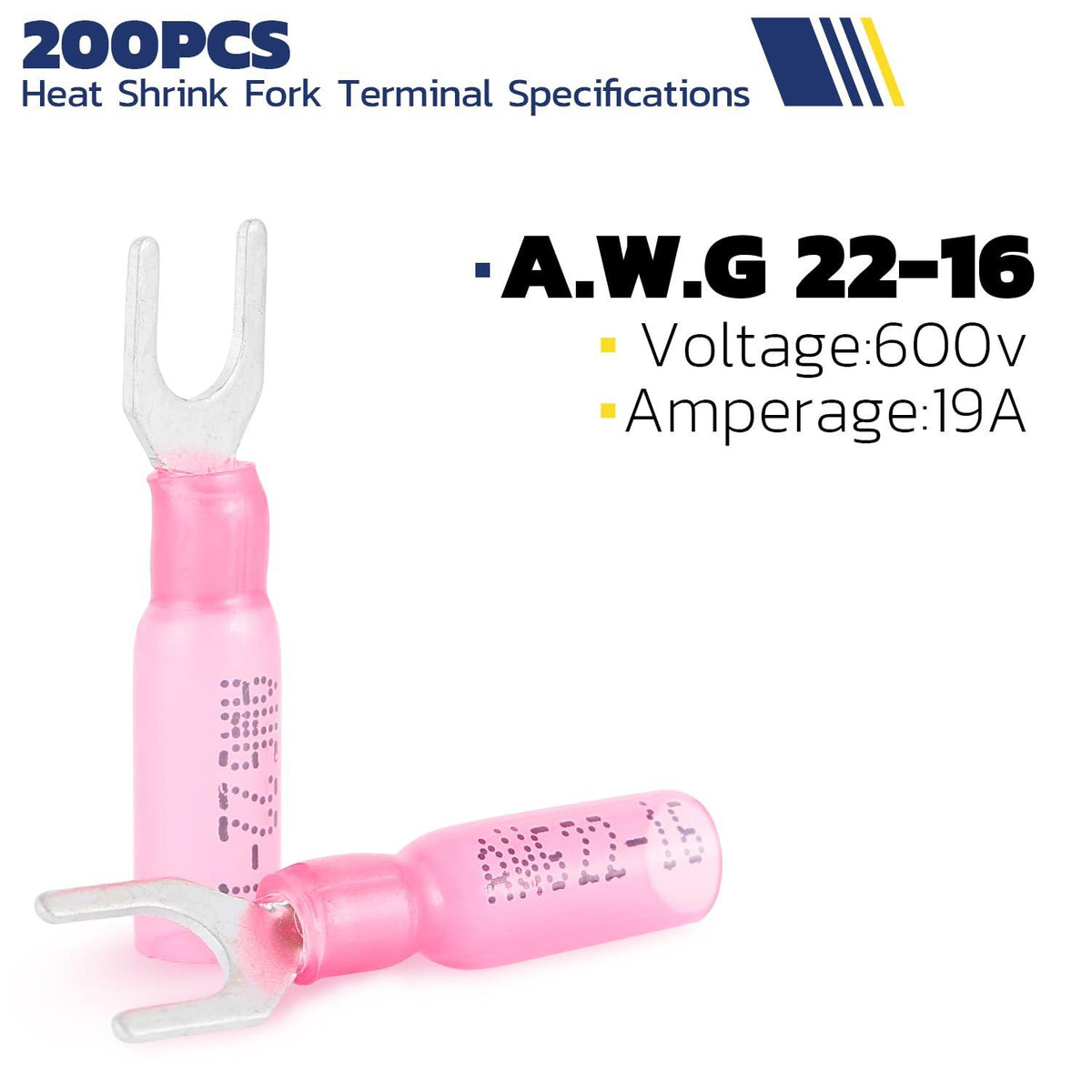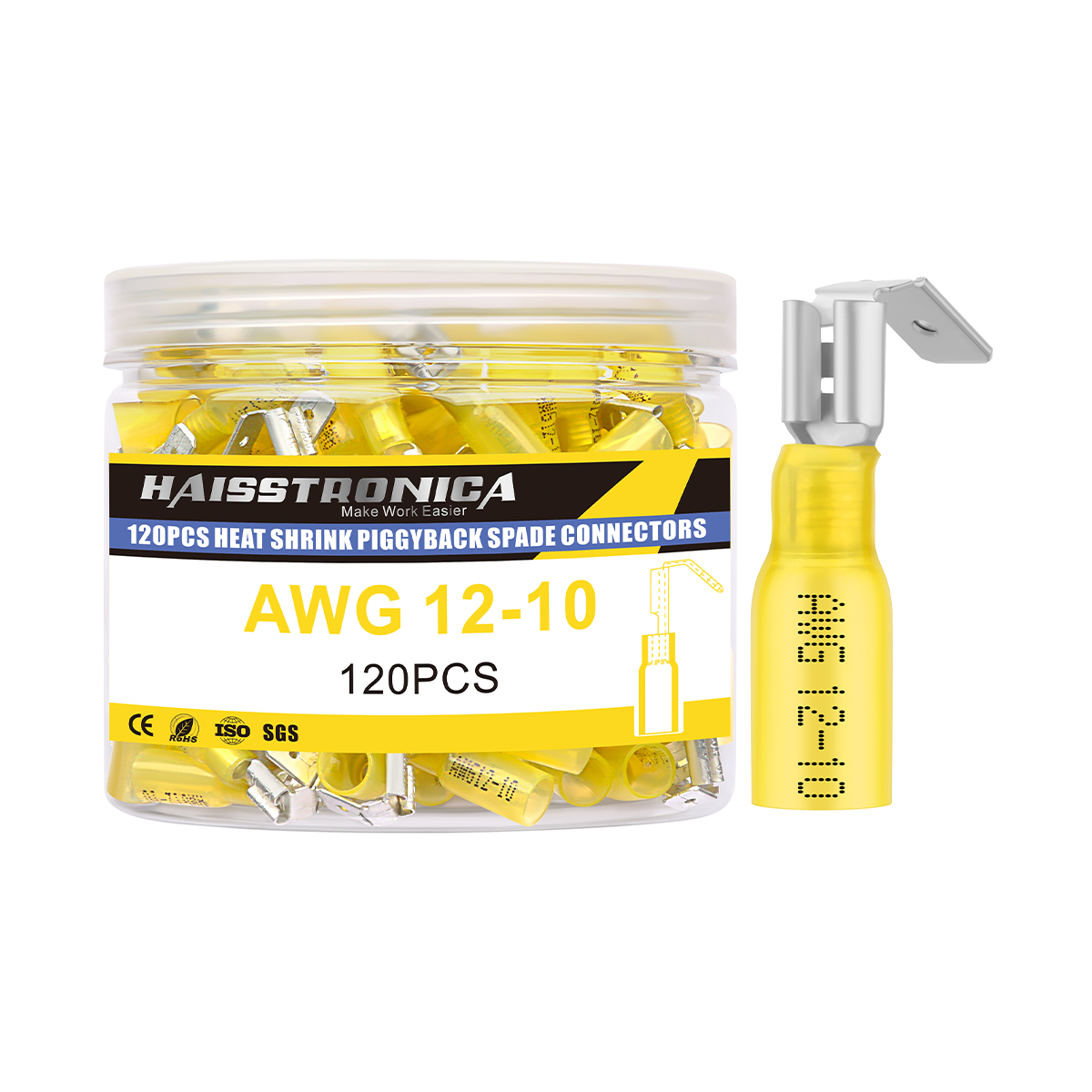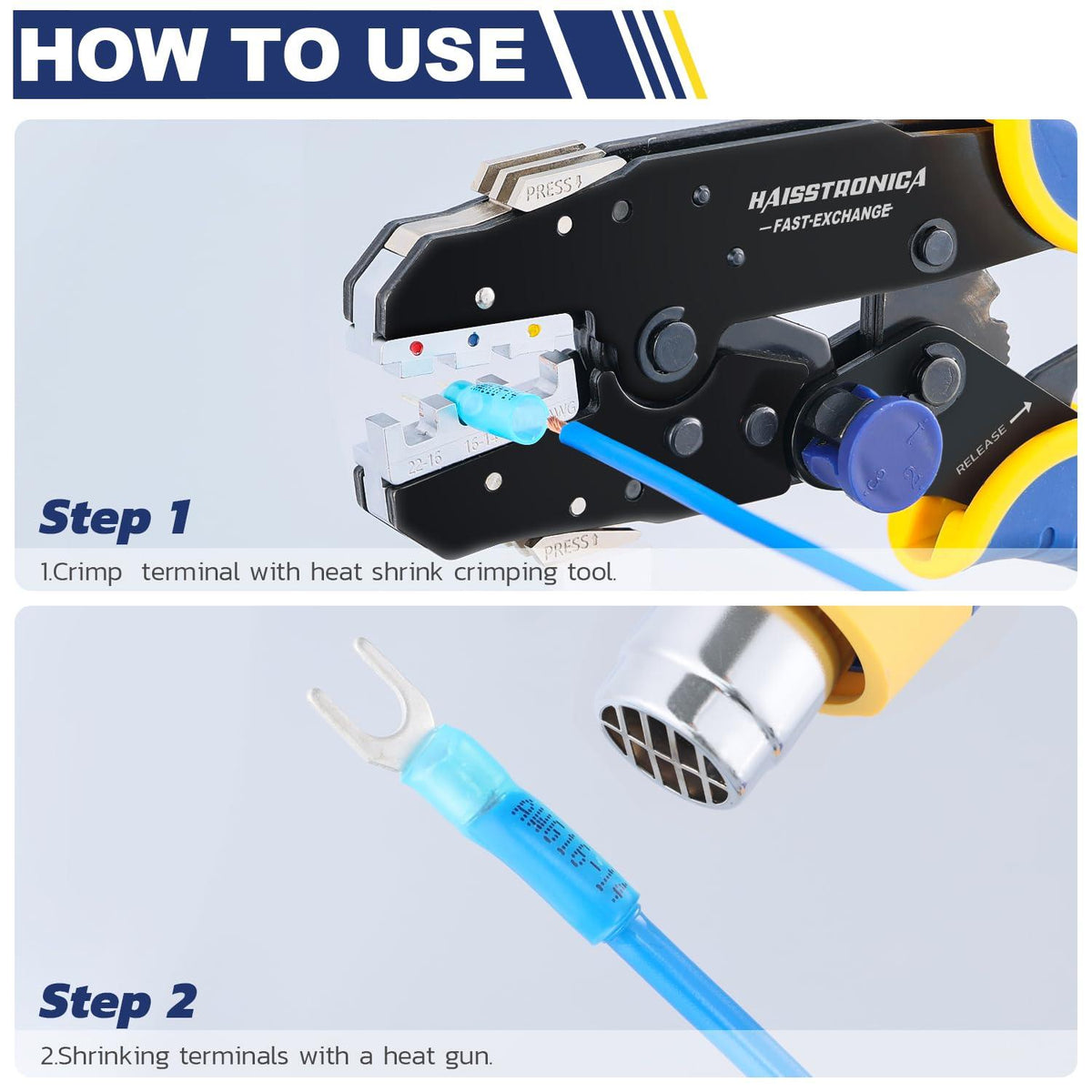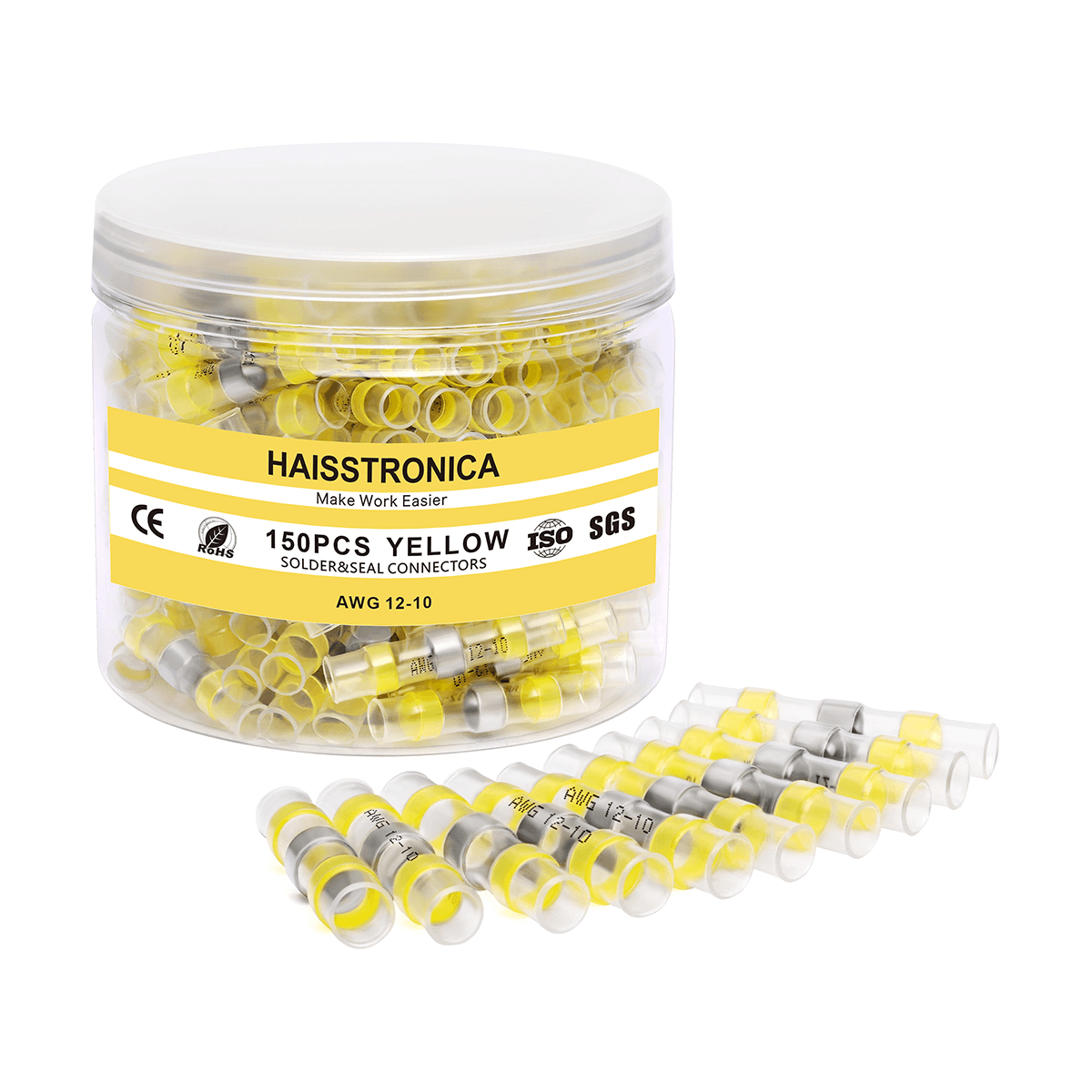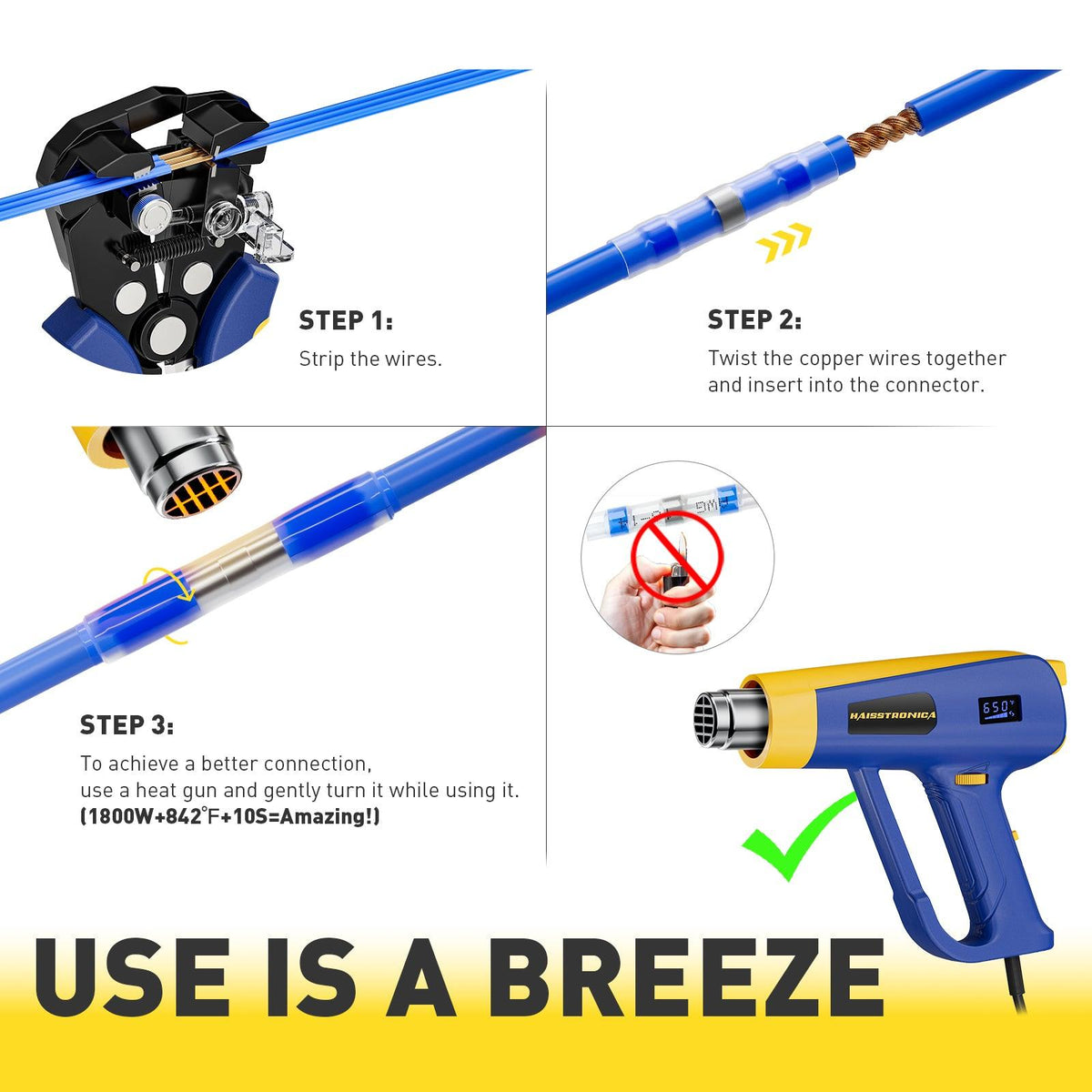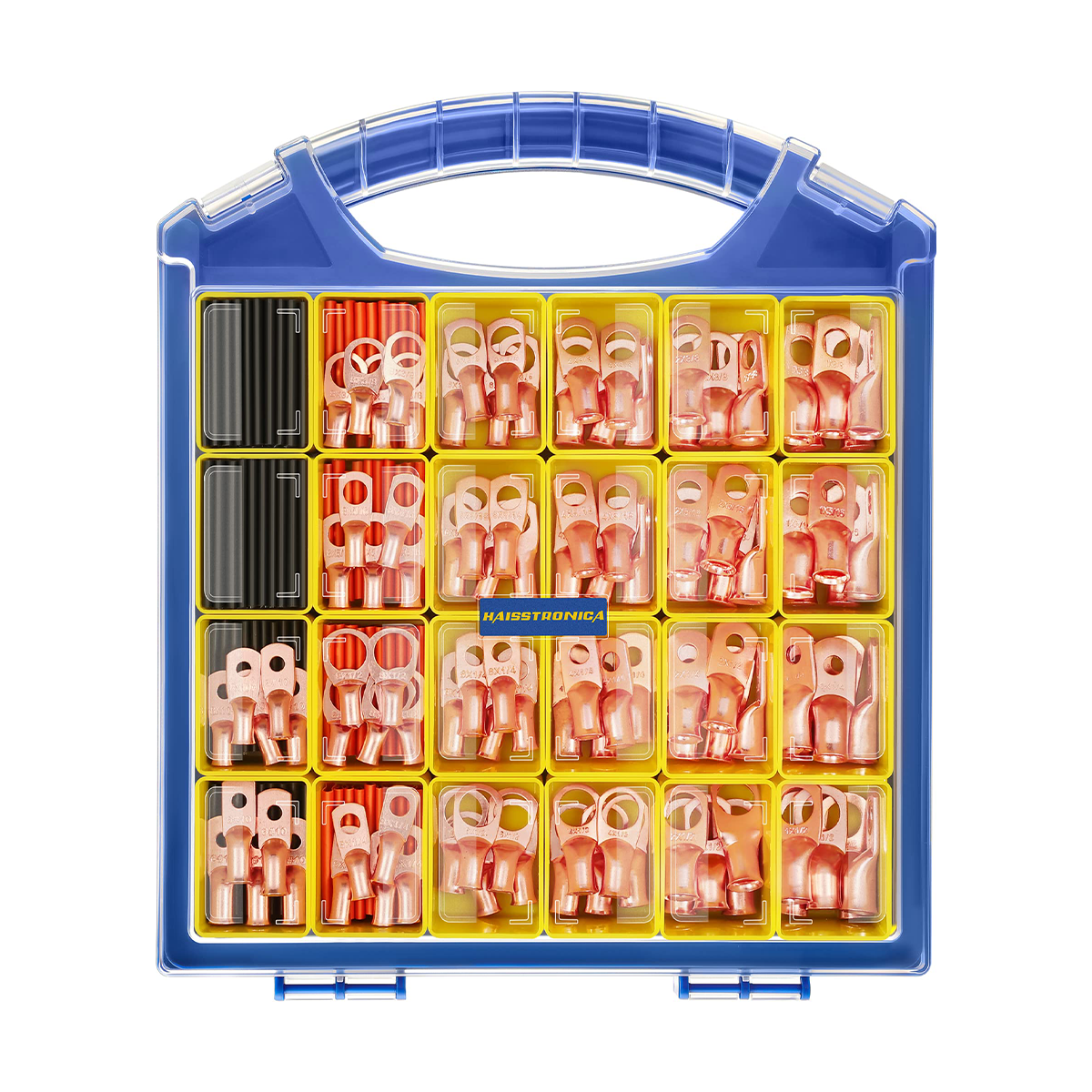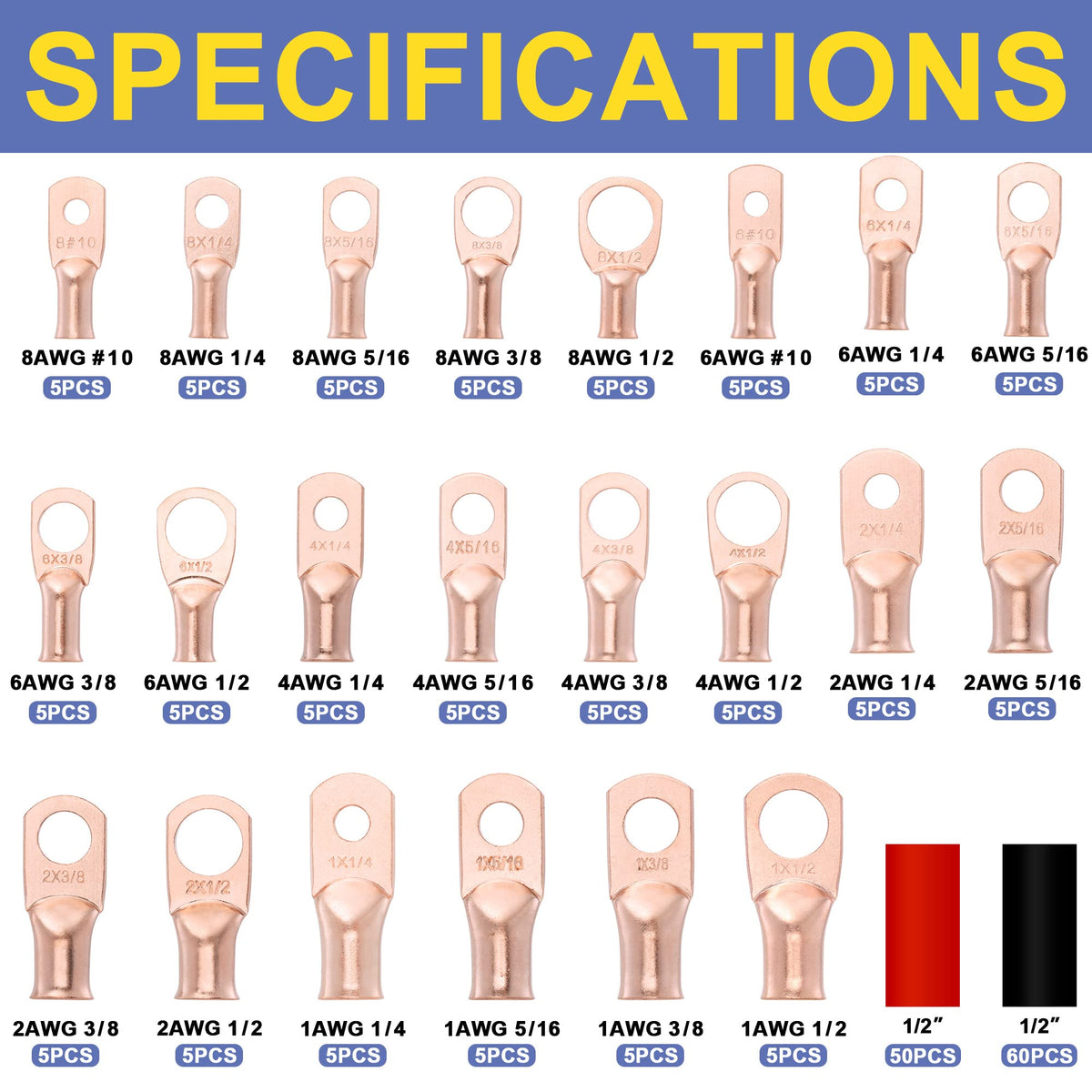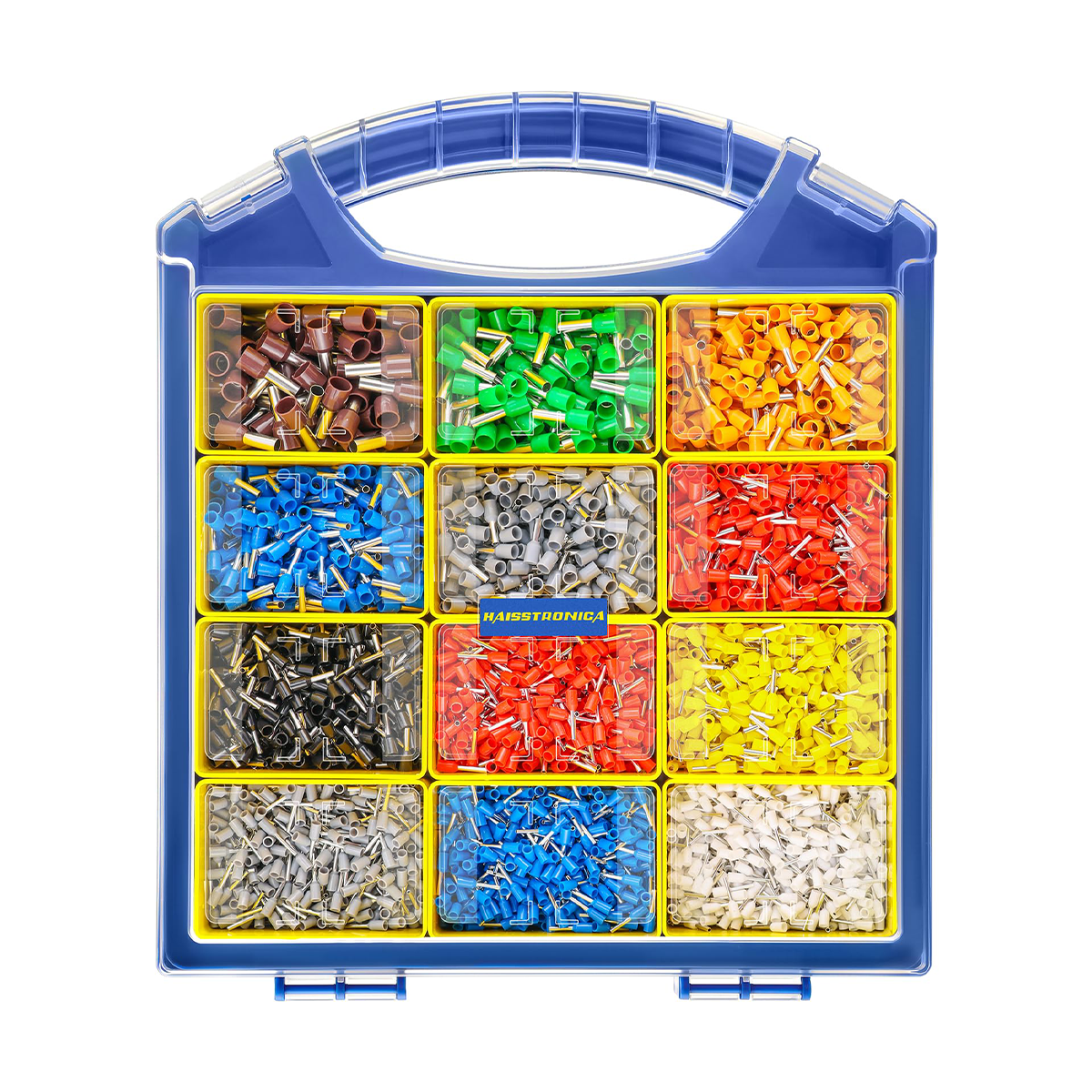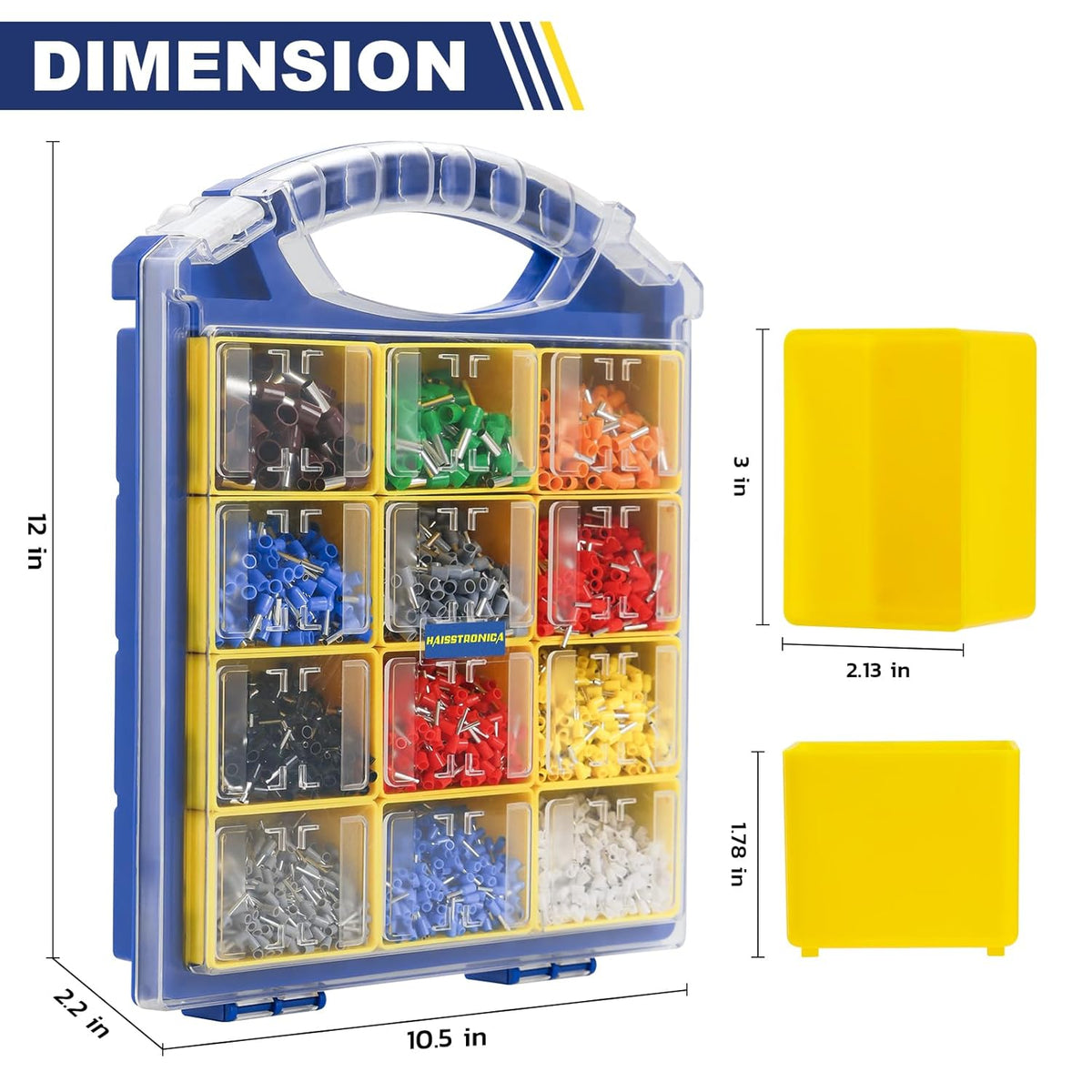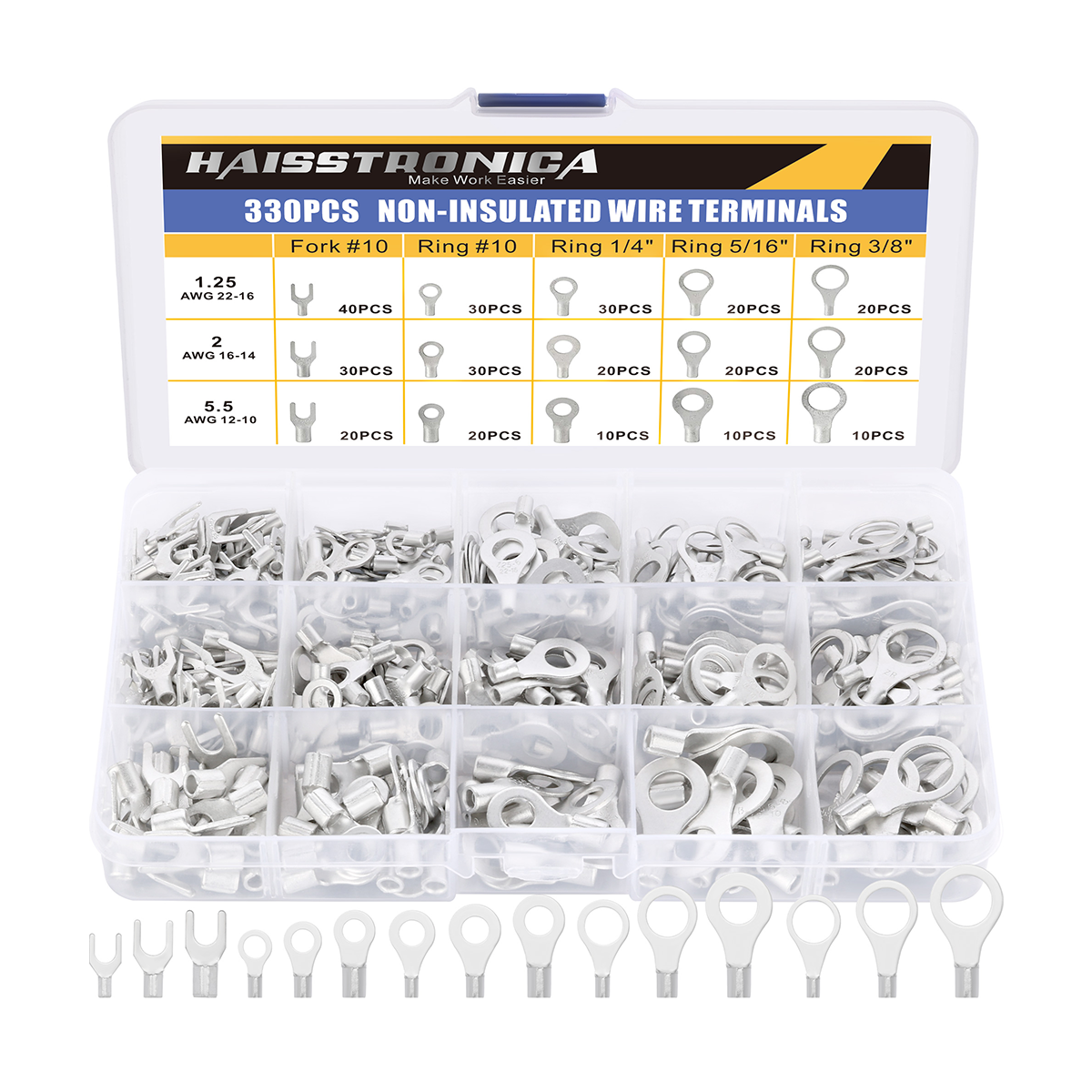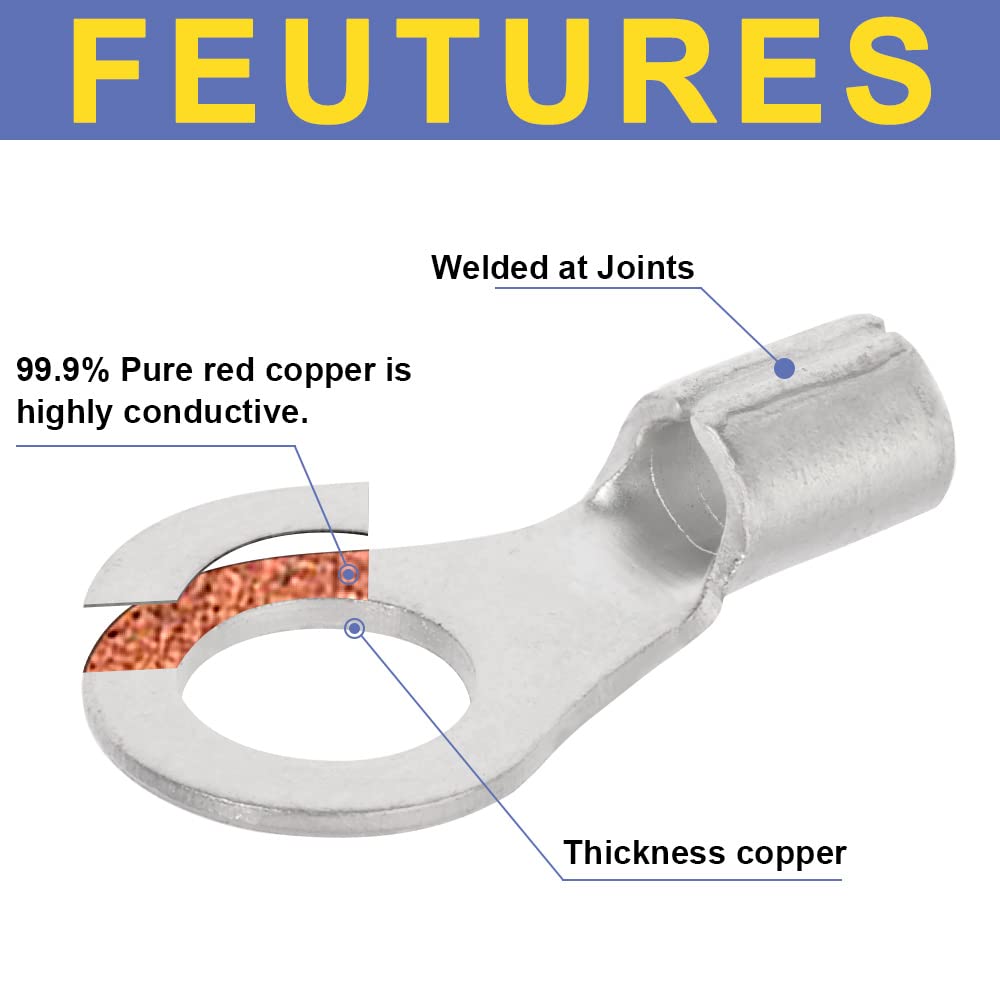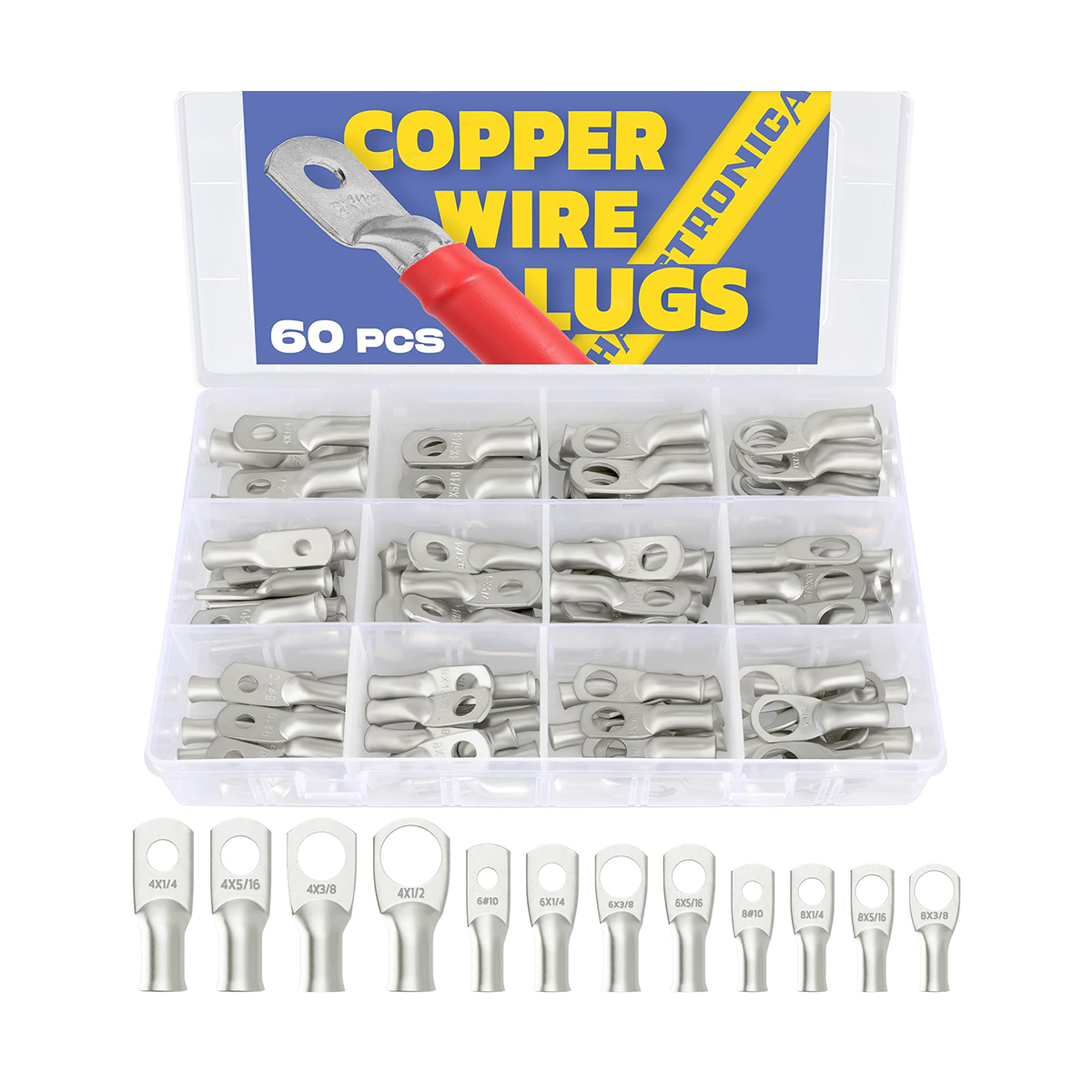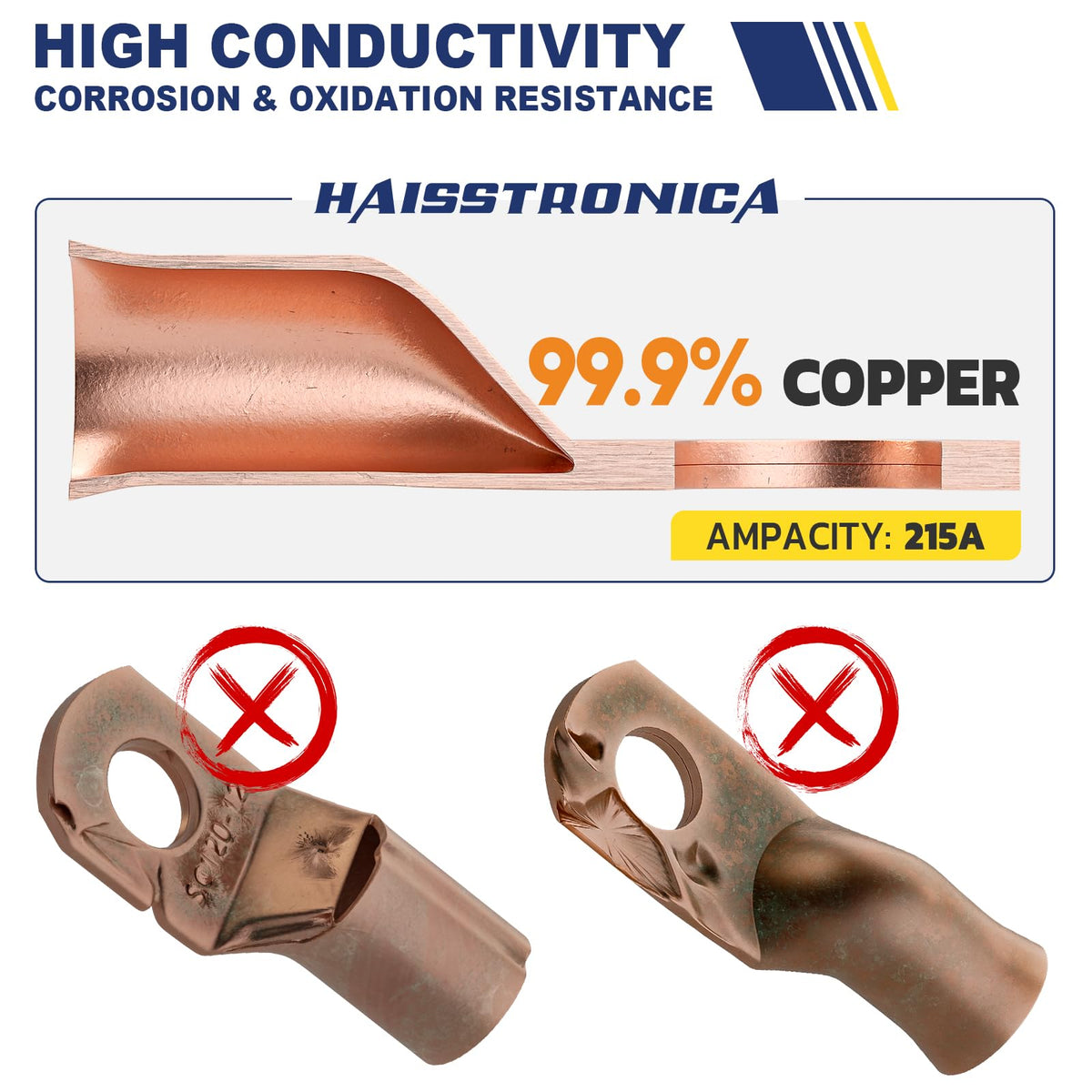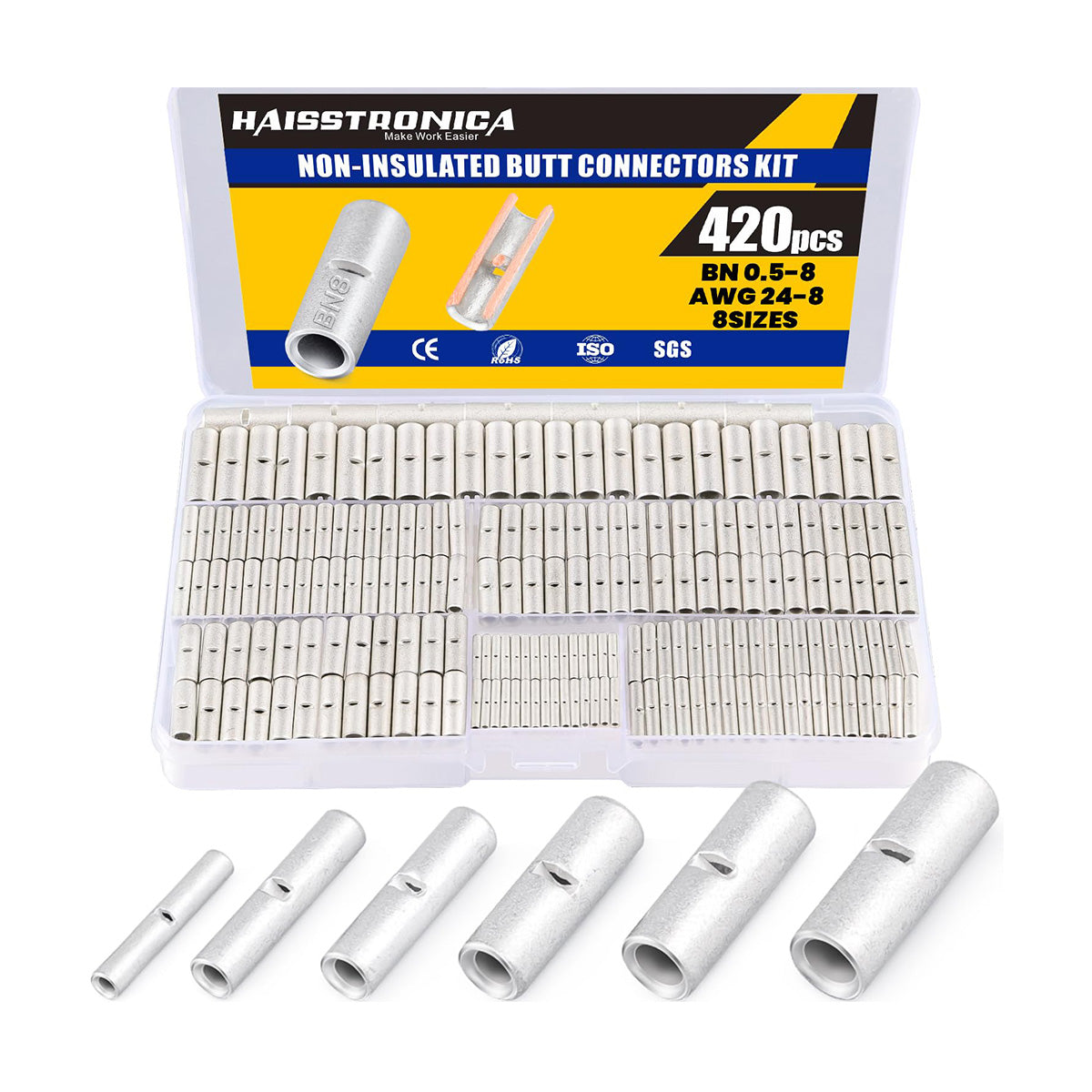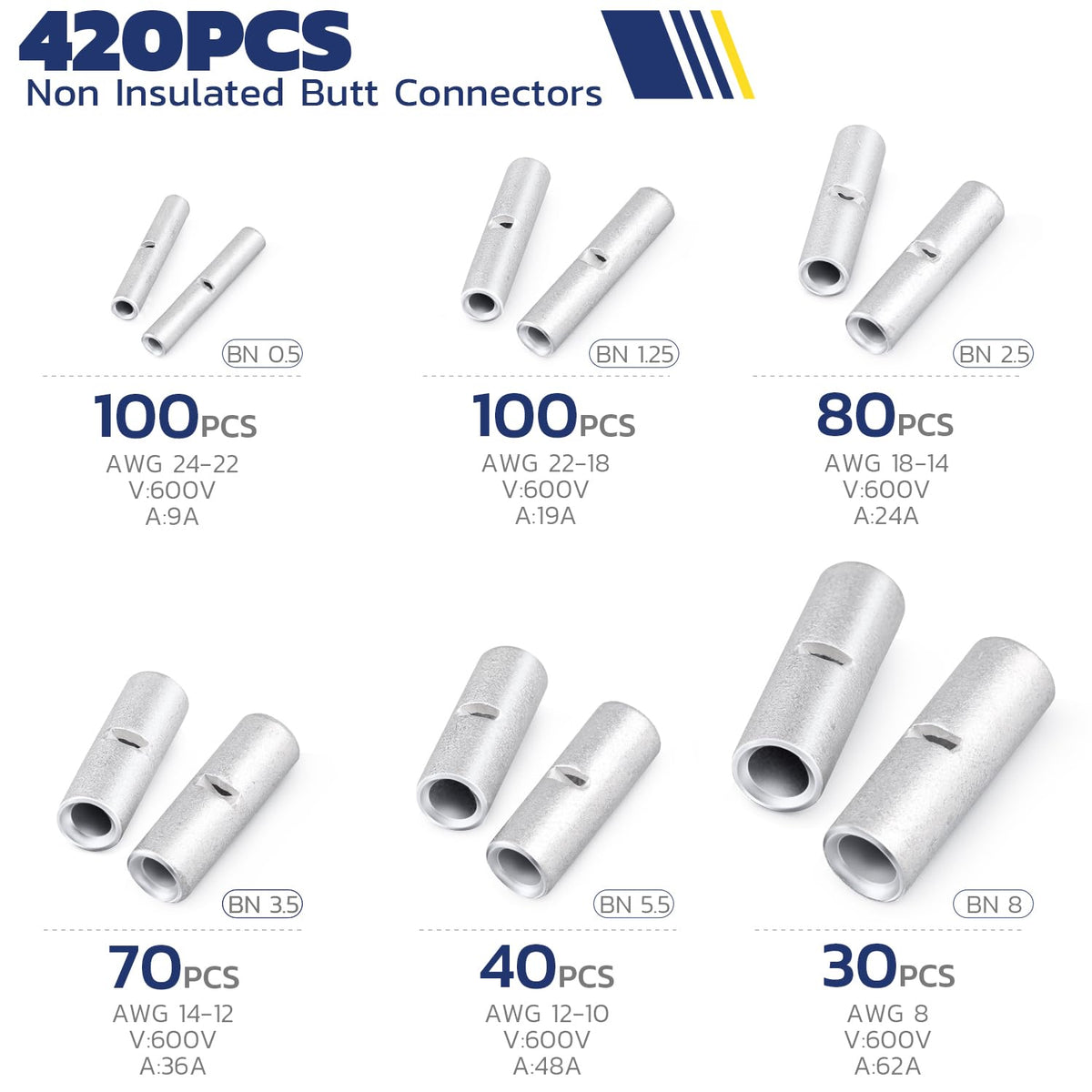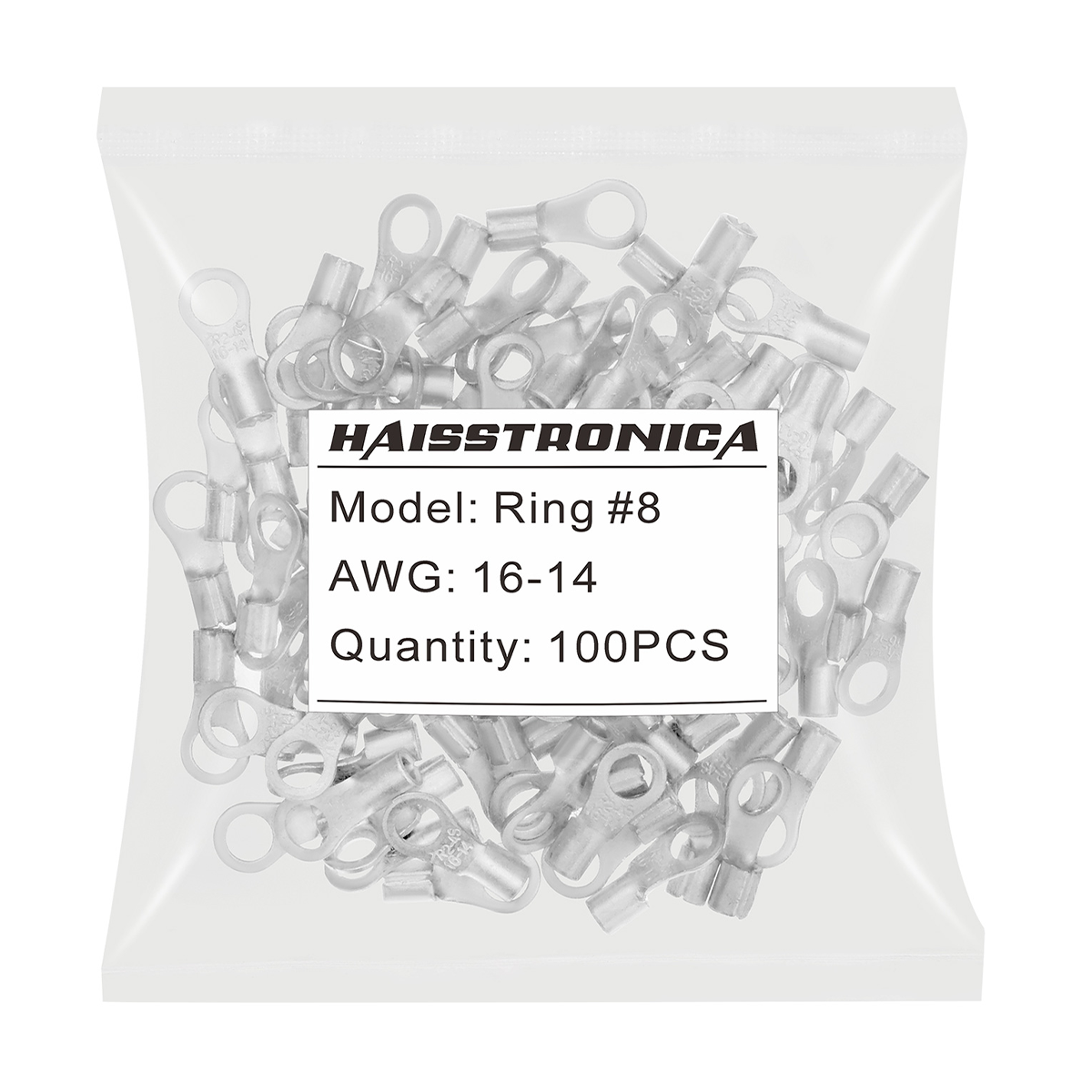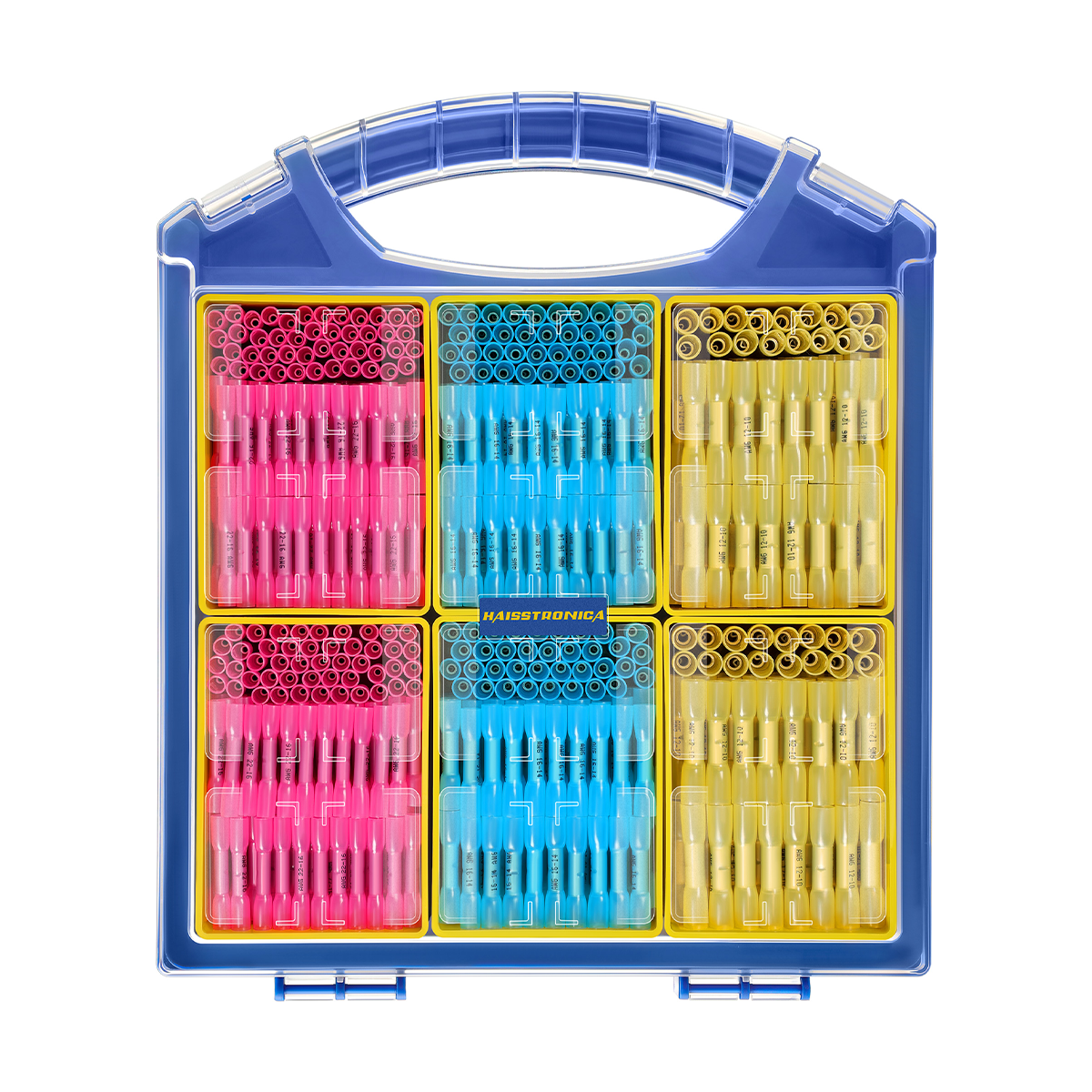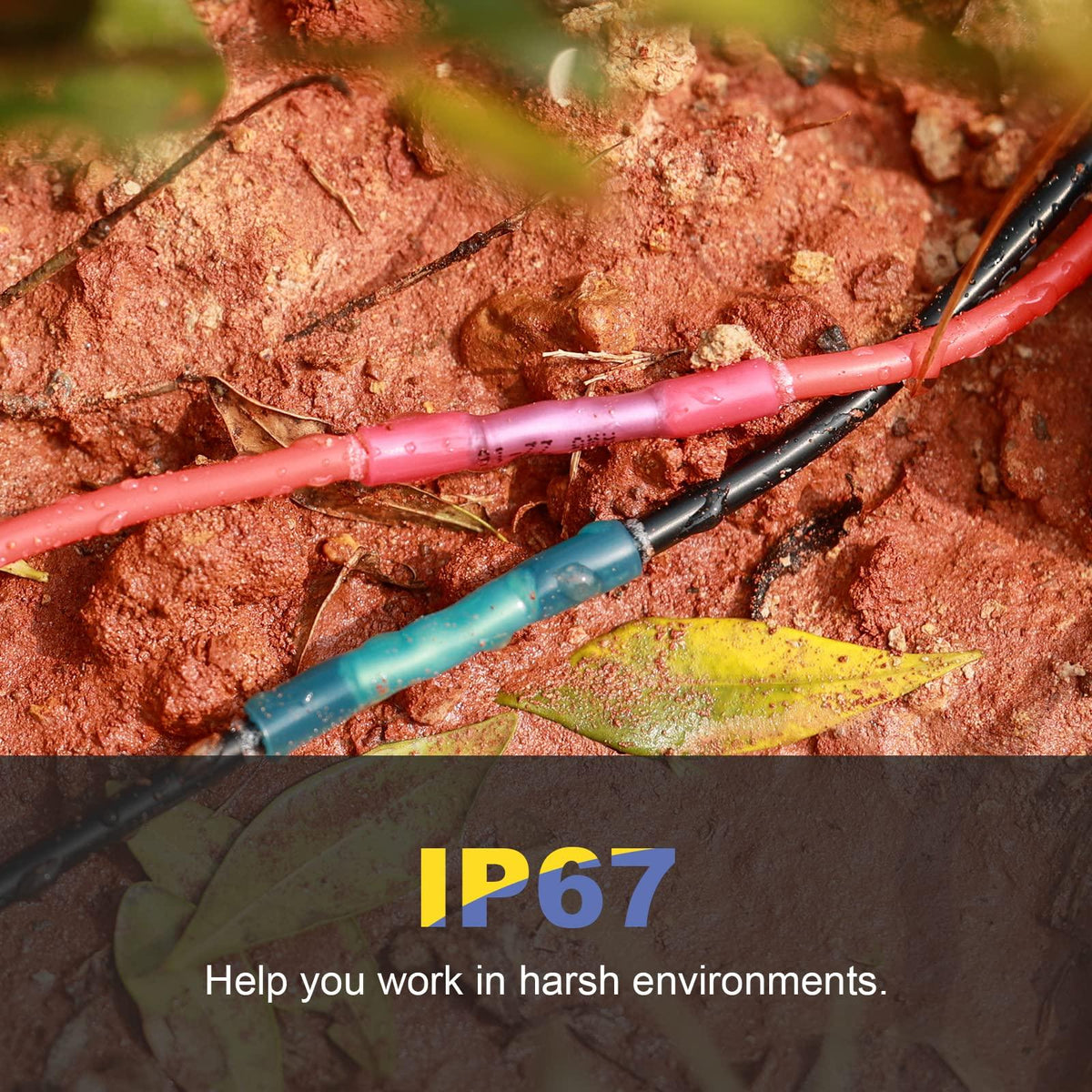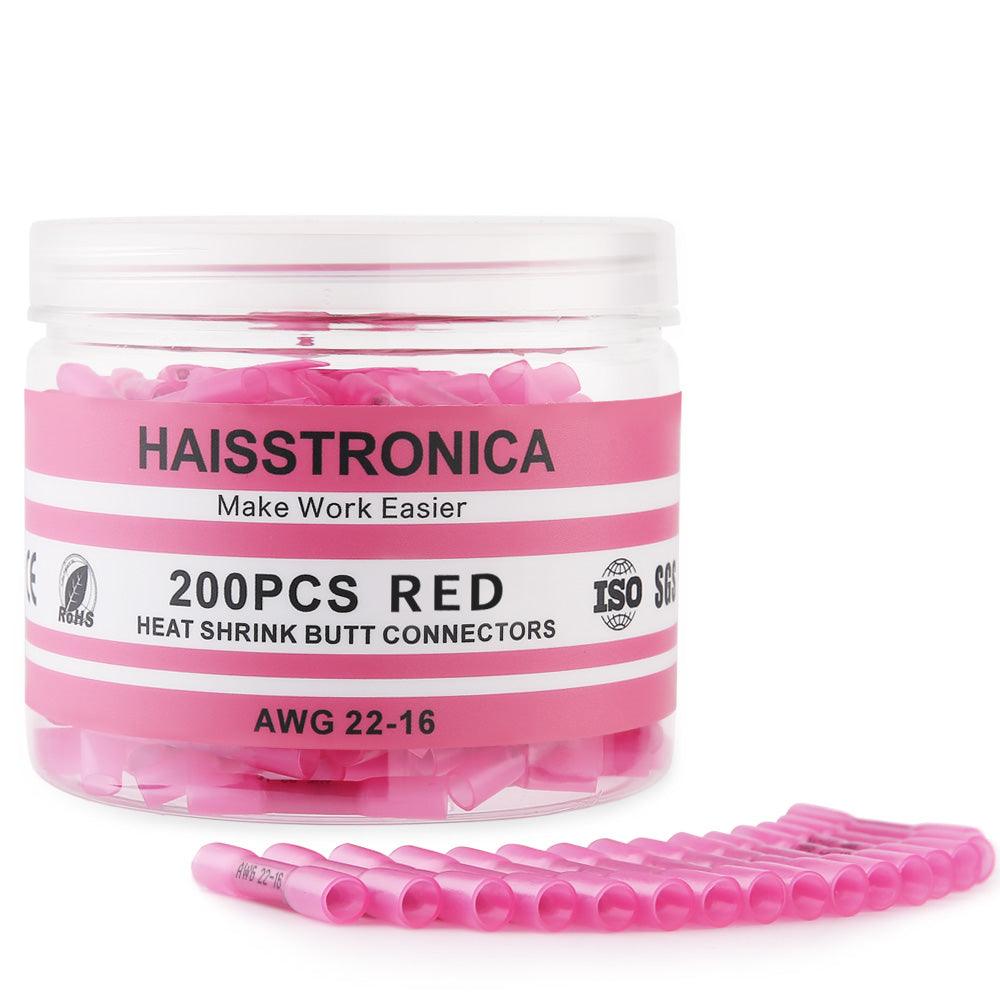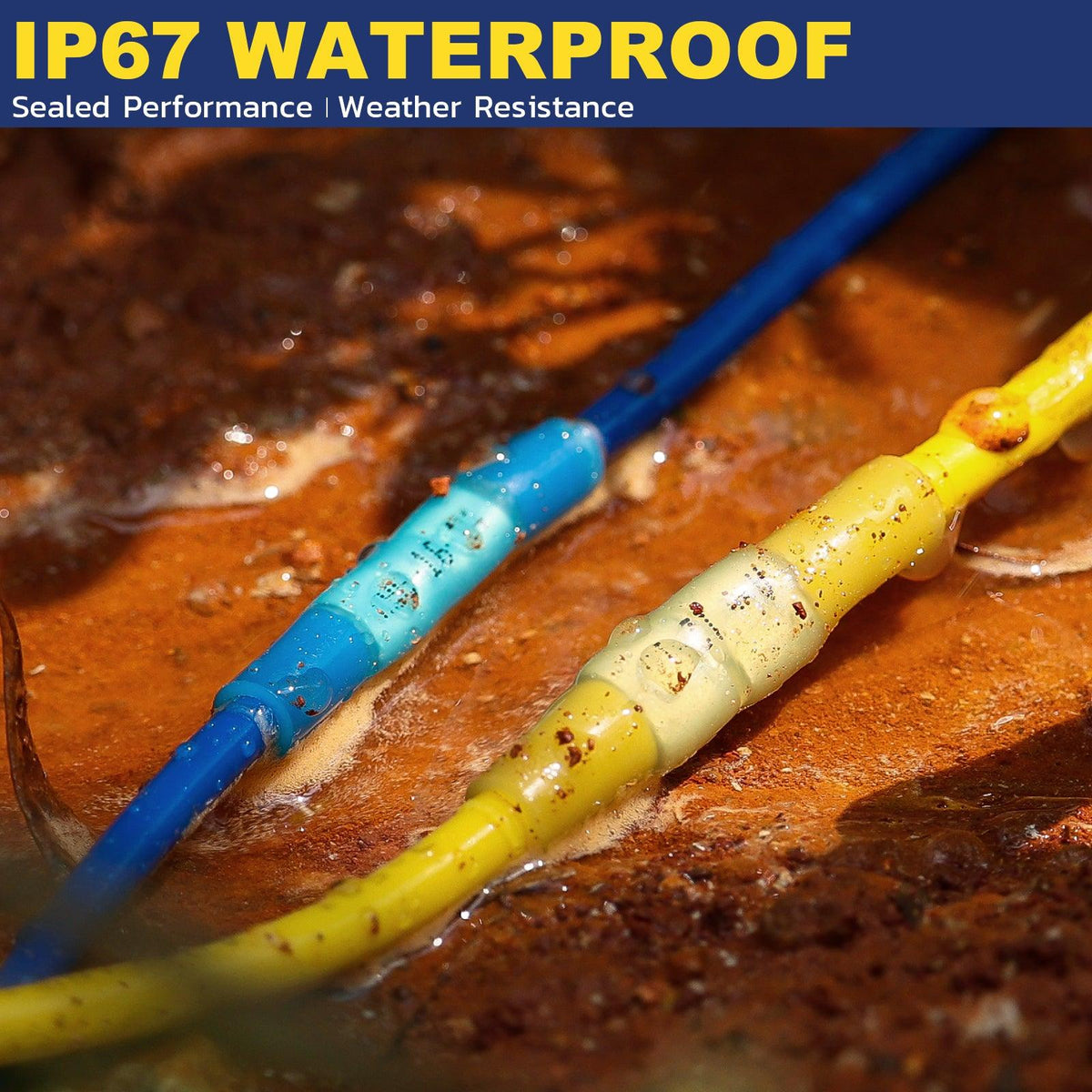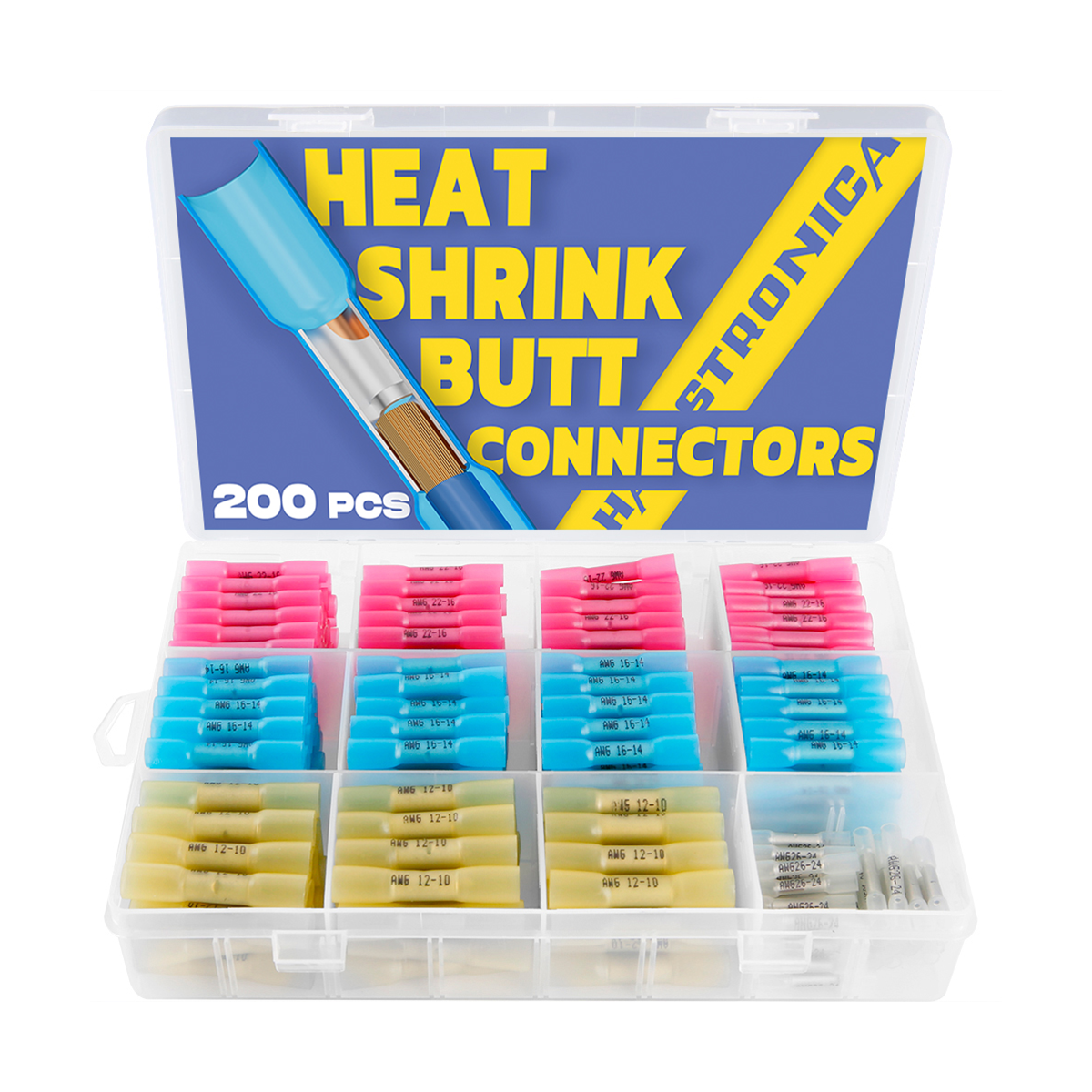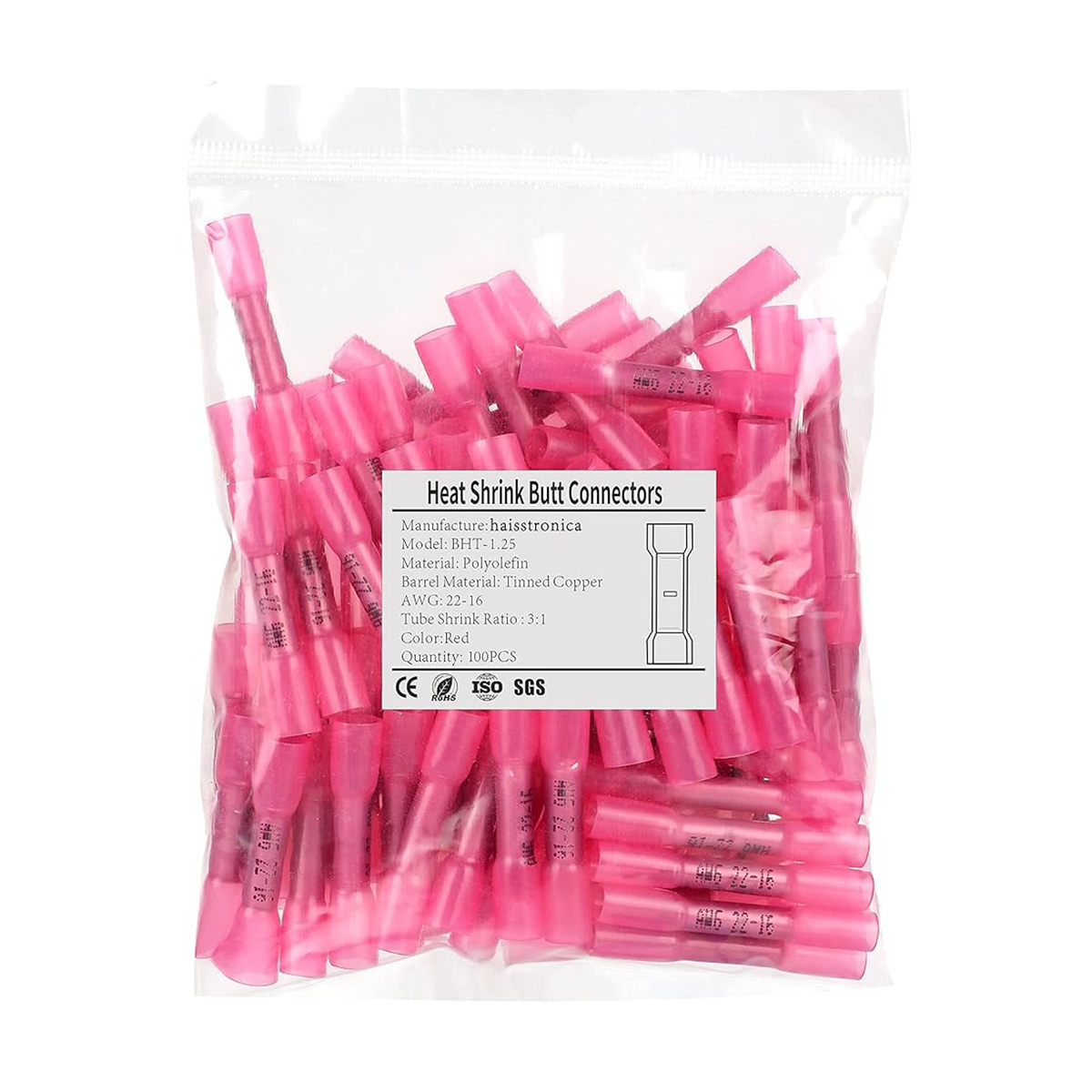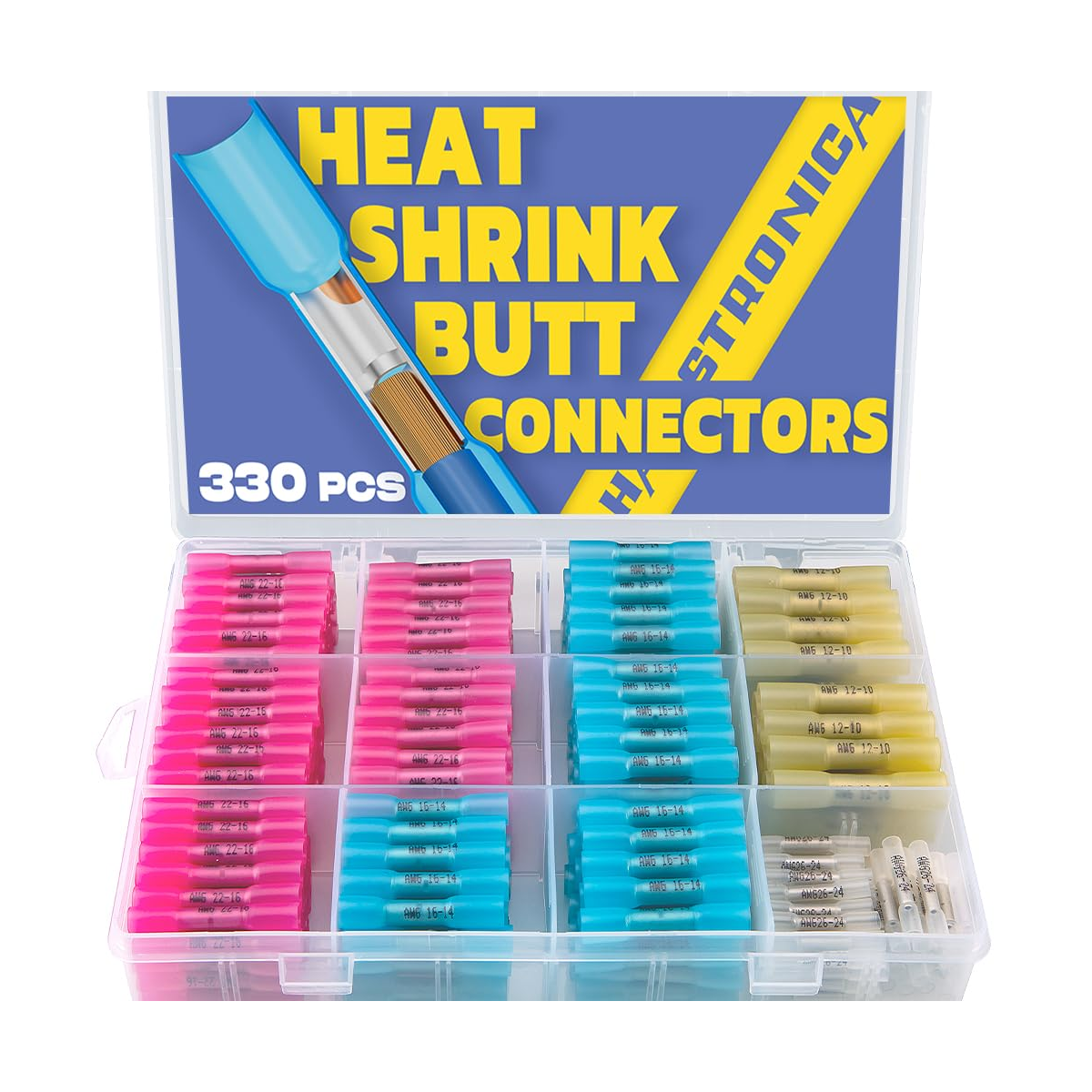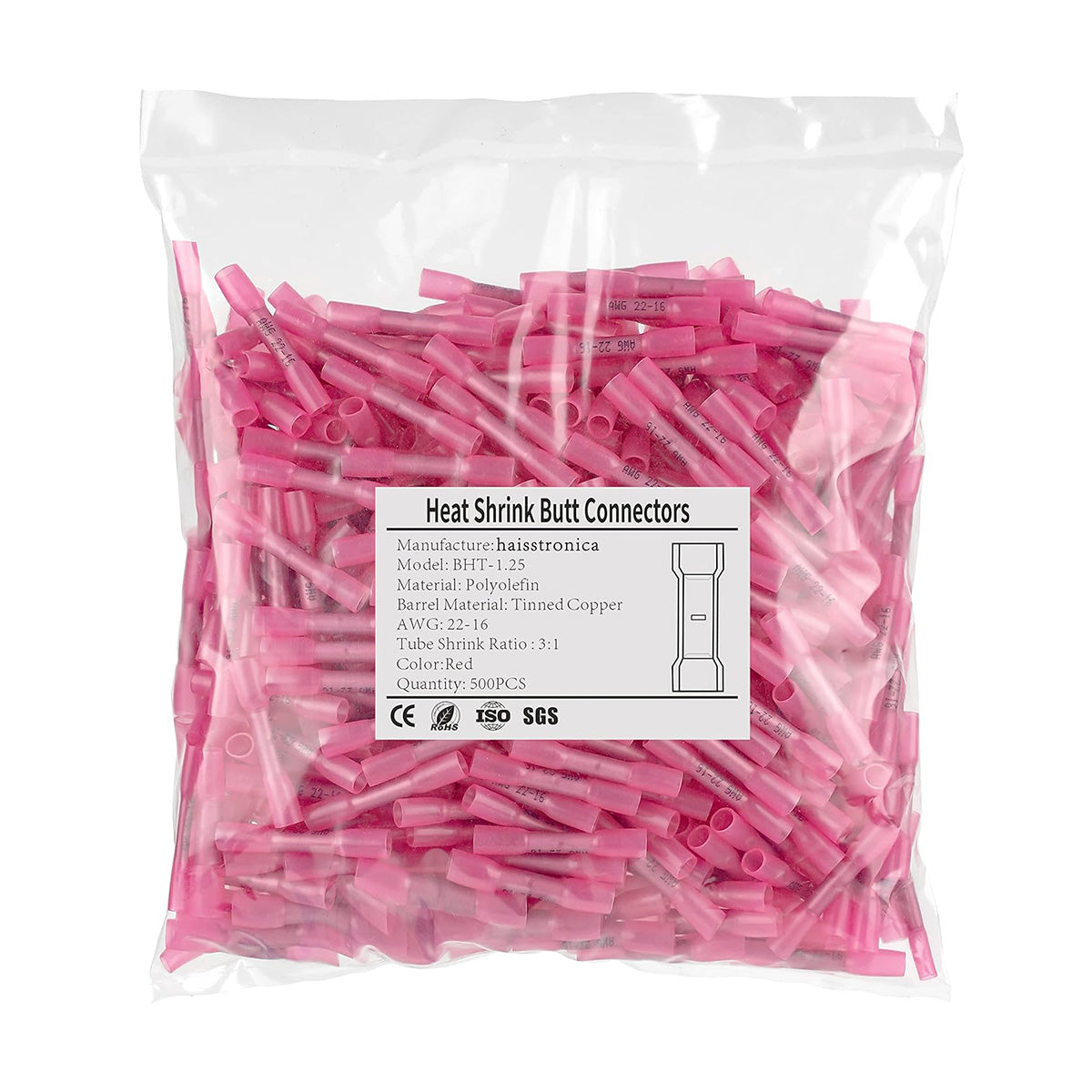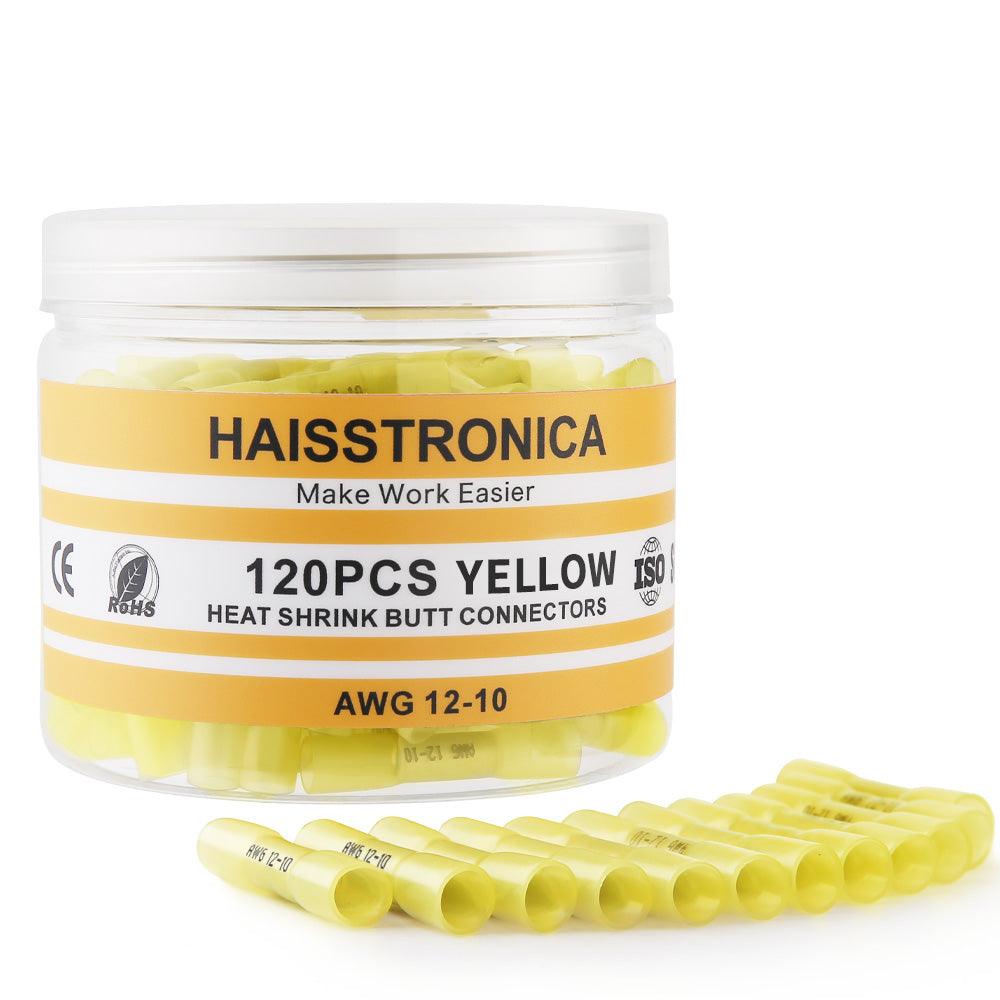Heat-shrink butt connectors (sometimes called heat shrink butt splice connectors or wire butt connectors) are a professional-grade solution for joining electrical wires. Unlike basic nylon-insulated splices, they combine a conductive metal barrel with a polyolefin shrink sleeve and adhesive lining. When heated, the tubing contracts and the adhesive melts, creating a sealed, waterproof electrical butt splice. Haisstronica’s Heat Shrink Electrical Crimp Butt Connectors Kit (330/420/580pcs, AWG 26–10) contains a full set of color-coded waterproof butt connectors in a sturdy carrying case. The red, blue, yellow and white connectors correspond to standard wire gauges (AWG 26–10) for versatile use in marine, automotive, RC, and home wiring projects. With pure tinned copper cores and a 3:1 shrink ratio, these butt connectors provide durable, insulated splices that resist moisture, abrasion and vibration.
A typical Haisstronica Heat Shrink Butt Connector kit (in blue plastic case) includes hundreds of red, blue, yellow, and white waterproof connectors (AWG 26–10), covering automotive and home wiring needs. These connectors are exactly the type of electrical butt connectors used in sensitive applications – they seal against harsh environments, using heat-activated adhesive to protect the splice from strain and corrosion. In practice, you strip two wire ends and insert them into the connector barrel; then, using a proper crimping tool, you compress the metal sleeve around the wires. Finally, a brief application of heat (e.g. with a heat gun at ~150–200 °C) causes the tubing to shrink tightly and the inner adhesive to flow, yielding a stable, moisture-proof bond.
Heat-shrink butt connectors (also called butt splice crimp connectors, crimp butt connectors or mechanical butt splices) offer several key advantages over ordinary non-sealed connectors:
-
Waterproof Seal: The clear adhesive-lined tubing fully seals around the wires when heated, preventing moisture ingress. This is essential for wires exposed to water, humidity, or salt spray.
-
Corrosion Resistance: The inner adhesive bonds to both the wire insulation and copper conductors, inhibiting oxidation and corrosion over time.
-
High Pull-Strength: Premium heat-shrink connectors have much greater pull-out strength than simple vinyl or nylon connectors. Haisstronica’s connectors are tested to withstand over 150 N of tensile force, far above what a wire should ever experience in service.
-
Dual Insulation: The dual-wall construction (nylon sleeve plus shrink tubing) provides extra strain relief and vibration resistance. This makes splices robust even in moving or vibration-prone applications like automotive or machinery.
-
UL/CSA Compliance: Quality heat-shrink butt connectors are UL Listed and CSA Certified, meeting industry safety standards. They are rated up to 600–1000 V and 105 °C, suitable for most electrical work.
Compared to basic butt connectors (which rely only on a nylon sleeve or simple vinyl insulation), heat-shrink connectors actively seal the joint. According to electrical suppliers, the clear adhesive-lined tubing “fully seals the terminal when heated, ensuring a strong and waterproof connection”. Standard insulated butt connectors without heat shrink do not provide this moisture seal, so they can corrode or fail if used in damp conditions. In contrast, Haisstronica’s connectors use a 3:1 shrink ratio polyolefin tube that shrinks tightly around the wires, while a hot-melt adhesive inside flows to create a permanent bond.
Electrically, the pure tinned copper core of each connector ensures high conductivity and minimal voltage drop. Haisstronica emphasizes that its connectors use 99.9% pure tinned copper, which maximizes current flow and resists corrosion. In fact, the copper wall thickness of the larger AWG 12–10 splices is about 1.0 mm【19†】, far more substantial than thin vinyl connectors. This means the Haisstronica butt splices can carry higher currents (up to ~48 A for AWG 12) without overheating, while the heat-shrink sleeve protects against shorts. By contrast, many generic crimp connectors use thinner copper that can crack under heavy load. Haisstronica’s design provides superior mechanical strength: even a 150 N pull test shows the connector holding firm without damage【55†】.
A waterproof test of Haisstronica’s butt splice shows its IP67 seal in action: even submerged, the joint remains insulated. In this experiment, a blue 16 AWG splice is crimped and fully shrunk, then placed under water; the heat-shrink tubing and adhesive prevent any water ingress. This kind of weatherproof performance is why marine and automotive electricians prefer heat-shrink butt connectors. The tubing also resists oils, fuels, and chemicals, ensuring long-term durability in harsh environments. After installation, you will see the tubing turn slightly opaque and the adhesive visible at the seams – a sign that the joint is fully sealed.
Beyond waterproofing, heat-shrink butt connectors excel in vibration and stress relief. The adhesive lining acts like a strain-relief glue, reducing stress on the crimped wires. As Del City explains, these connectors have “greater pull strength than connectors made solely from vinyl or nylon,” which means they won’t split or work loose under movement. In Haisstronica’s own tests, a bent blue wire connected with their splice sustains a 150 N force without slipping, demonstrating excellent binding strength. The tight fit of the heat-shrink sleeve also keeps dirt and corrosion away from the metal. In a side-by-side comparison image (below), Haisstronica’s connectors (left) remain intact under load and water, whereas generic connectors (right) are torn or corroded【55†】.
An Haisstronica butt connector (left) versus a generic connector (right): the Haisstronica part shows no damage or corrosion after a 150 N pull test, while the generic connector is torn and rusted. This highlights the mechanical superiority of Haisstronica’s design (stronger crimp and adhesive bond) over ordinary splices. In short, heat-shrink butt connectors provide durable, permanent splices that far outperform basic butt crimps. In fact, crimp splice connectors “are durable and long-lasting” by design, making them ideal for critical wiring (from marine and telecom to aviation) where failures are unacceptable.
It’s helpful to compare heat-shrink butt splices to other splicing methods. For example, soldered joints can create a strong bond, but soldering thick gauge wires is difficult and requires specialized tools. In many cases, heat-shrink connectors eliminate the need for solder entirely by using a hot-melt adhesive in the sleeve. This “solder seal” approach is faster and more consistent than hand-soldering, and it does not need a soldering iron – a heat gun is sufficient.
Compared to simple Nylon or vinyl insulated butt connectors, the heat-shrink type brings extra benefits. Nylon-only connectors rely solely on the mechanical crimp and offer minimal strain relief. By contrast, heat-shrink connectors have a clear polyolefin shell plus adhesive, giving a dual-insulation, moisture-proof seal. Likewise, “crimpless” connectors (bare solder sleeve or just heat-shrink tubing) may seem easy, but they lack the uniform crimp of a metal barrel. A professional butt splice uses a proper crimp and then shrinks – combining the best of crimp and heat-shrink.
In practice, you will find that waterproof butt connectors last much longer. For example, when repairing an automotive wire harness or marine cable, a non-sealed butt splice can fail after a few wet/dry cycles, whereas a heat-shrink splice will stay tight and corrosion-free. Heat-shrink splices are also UL approved for building wiring (rated up to 105 °C, 600–1000 V), making them fully code-compliant for power circuits.
Using heat-shrink butt connectors is straightforward, but it requires attention to technique. The general steps are:
-
Strip the wires: Remove about 1/4″ (6–8 mm) of insulation from each wire end. Ensure clean, straight cuts on the insulation, and tin the ends if needed for extra corrosion resistance.
-
Insert and Crimp: Slide both stripped ends fully into the butt connector barrel. Use the correct size slot on a ratcheting crimp tool and crimp firmly on the metal sleeve. (As Haisstronica notes, “a proper crimping tool…is recommended for reliable crimps”.) Crimp first before heating – once both sides are secured, wiggle the wires to check that they cannot pull out.
-
Heat Evenly: With a heat gun (set to ~150–200 °C), apply heat to the middle of the connector and work outward along the tubing. Use slow, circular motions, keeping the nozzle about 2–3 inches away. Do not use a cigarette lighter or torch – a heat gun ensures an even temperature. As the tubing shrinks, you will see it tighten and the adhesive melt. Keep heating until the tubing is fully opaque and no gaps remain.
-
Cool and Inspect: Remove heat and let the splice cool naturally (don’t move or pull during cooling). Once cool, inspect the seam to ensure a continuous glue line. A properly done splice will have a solid, translucent seal with visible adhesive.
In practice, the installation is as simple as shown above. Step 1: insert stripped wire ends and crimp with a proper tool (correct AWG slot). Step 2: apply heat until the connector’s tubing shrinks fully and the adhesive seals the joint. This two-step process produces a strong, professional connection in seconds.
For best results, use the recommended tools. A ratcheting wire crimping tool is essential: it ensures uniform pressure and avoids over-crimping. Haisstronica, for example, offers a premium ratchet crimper (AWG 22–10) designed for insulated terminals and heat-shrink connectors. Using such a tool, the jaws close at a preset force, producing consistent, ANSI-compliant crimps every time. In fact, Haisstronica’s own blog recommends “Haisstronica’s professional wire crimper (with adjustable ratchet jaws)” for reliable crimps in their kits.
The correct tool makes a big difference. A ratchet crimper (like the one pictured) has color-coded slots for AWG 22–16, 16–14, and 12–10. Each terminal size is clearly labeled on the jaws. The ratchet mechanism (yellow release lever) ensures the tool only opens after a complete crimp cycle. As a result, the connector barrel deforms properly without damaging the heat-shrink insulation. After crimping and heat-shrinking, no part of the butt connector will come loose. (As always, follow Haisstronica’s instructions and consider watching a video tutorial for guidance.)
A quick video demonstration (below) shows these steps in action. For example, a tutorial by U-Haul Trailer Hitches (below) walks through using a heat-shrink butt connector on automotive wiring. It highlights crimping both sides, then heating the tubing to activate the adhesive. Likewise, a Pacer Group video illustrates the shrink-and-seal process for a solder-seal connector. These videos reinforce the tips above: insert, crimp, then heat evenly until the joint is fully sealed.
Quick Tips for Installation:
-
Always crimp before heating. Crimp firmly with the wire secured so it won’t slip.
-
Use a temperature-controlled heat gun, not an open flame. Ideally heat in the 150–200 °C range.
-
Heat each connector evenly from center outward, rotating the wire as needed.
-
Stop heating when the tubing uniformly shrinks and turns translucent (about a few seconds).
-
Allow the joint to cool completely before handling to lock in the seal.
Haisstronica’s Heat Shrink Butt Connectors Kit offers several practical benefits over generic assortments. First, the range of components is comprehensive: it includes butt splices (as well as ring, fork, and spade terminals in other kits) covering the full AWG 26–10 spectrum. You get hundreds of each red (22–16 AWG), blue (16–14 AWG), yellow (12–10 AWG), and white (26–24 AWG) connectors, all neatly organized in a label-ready case. This means you won’t have to mix-and-match brands or deal with missing sizes. Color-coding also matches industry norms, so electricians instantly know which gauge they’re using.
The material quality is top-notch. Each connector’s copper barrel is fully tinned (for solder-friendly contact) and built robustly. For example, the AWG 12–10 (yellow) connectors have about 1.0 mm of copper wall thickness【19†】, which provides high current capacity. Haisstronica emphasizes “tinned copper for maximum current flow and corrosion resistance”. The polyolefin shrink tube is also thicker and dual-layered: a nylon outer sleeve plus a thick clear heat-shrink tube with glue. Upon heating, it recovers to one-third its length (3:1 ratio) for a tight grip.
A close-up on connector cross-sections: the copper cores of the red (BHT-1.25) and blue (BHT-2) crimp splices measure roughly 0.7–0.8 mm (AWG 22–14), ensuring good conductivity【19†】. The high-purity tin plating adds corrosion protection. Inside the tube, you can see the yellow adhesive lining that will melt and lock the wires. These features mean each Haisstronica splice outperforms a plain butt connector: current flows efficiently and the joint is mechanically reinforced.
Beyond raw materials, the kit’s construction and standards are impressive. All connectors comply with RoHS and ISO9001 (and are CE/SGS tested), reflecting factory quality control. They are UL Listed/CSA Certified (E545229) and rated for building wire. They operate up to 105 °C continuous, and even cryogenically at –55 °C. In short, these splices meet or exceed industry specs, whereas many cheap kits do not guarantee such ratings.
Functionally, the kit is designed for ease of use. Haisstronica notes the workflow as “Crimp, apply heat, and you have a strong, professional connection in seconds”. The included connectors come with a built-in wire stop (a divider inside the barrel) to ensure the stripped wires enter the full depth before crimping. After shrinking, the tubing becomes translucent, allowing for easy inspection of each splice. The adhesive provides strain relief so the conductor cannot vibrate free. In field tests, these connectors performed flawlessly: once crimped and shrunk, they resisted twisting and resisted water ingress even after prolonged submersion.
Finally, consider the value of the Haisstronica kit. Compared to competitors, you get a larger assortment (up to 580 pcs) at a comparable price, with all the high-end features above. Many other “best butt connectors” kits lack adhesive lining or use lower-purity copper. With this kit you’re getting a professional-grade solution endorsed by industry users. And if you pair it with Haisstronica’s recommended tools – for example, their ratcheting wire crimping tool – you’ll get consistently flawless crimps every time.
In summary, using heat-shrink butt connectors (especially the Haisstronica kit) ensures electrical safety, durability, and reliability. You benefit from fully insulated, waterproof joints that stand up to heat, moisture, and mechanical stress. These connectors carry current more efficiently and protect your splices from corrosion and abrasion. For any electrician, DIYer or auto technician, the investment in a quality kit is repaid by long-lasting, maintenance-free connections.


